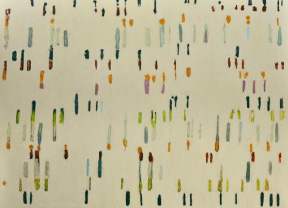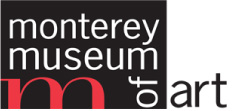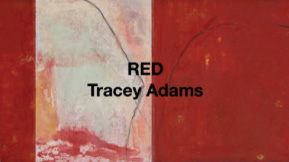by Tracey Adams | Mar 18, 2014 | Blog
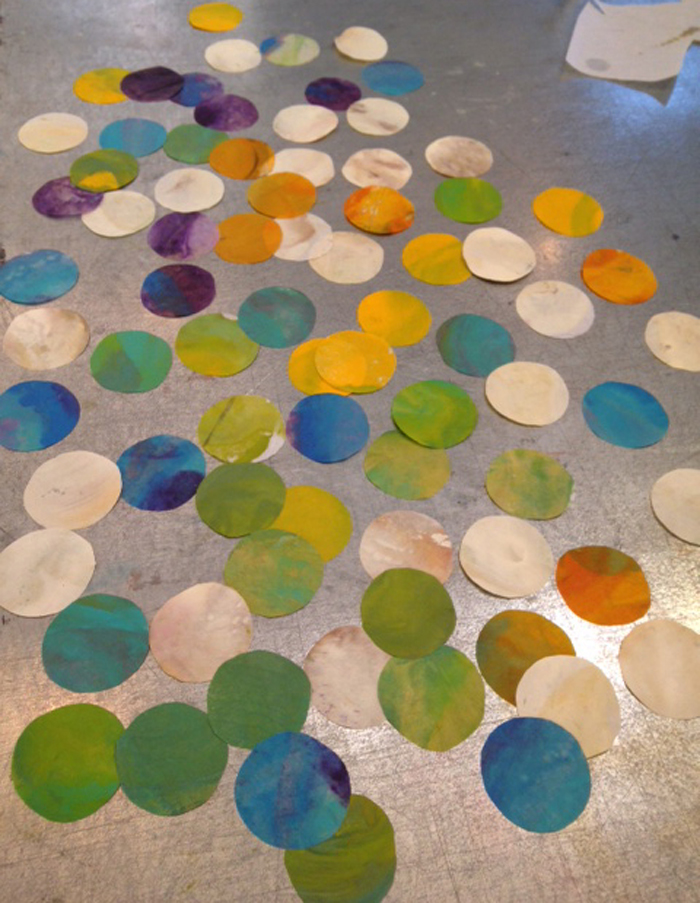
Last October, I was invited to be the 2014 Visual Artist for the Music at Menlo Chamber Music Festival and Institute, a three week event occurring this summer in Atherton, California. It’s is a very exciting time for me, given that music and art are two of the most important things in my life. The founding directors of Music at Menlo, David Finckel and Wu Han, also members of the Emerson String Quartet, chose my Revolution series (2005-2008) to represent this year’s promotional materials and to be exhibited during the event. After experimenting with different ideas, I decided to revisit this series to see what creative possibilities still exist. It is still in the early stages, but four paintings have been completed and three more are underway.

(r)evolution 1, encaustic, collage and oil on panel, 40×40, 2014

(r)evolution 2, encaustic, collage and oil on panel, 40×40, 2014

(r)evolution 3, encaustic, collage and oil on panel, 40×40, 2014
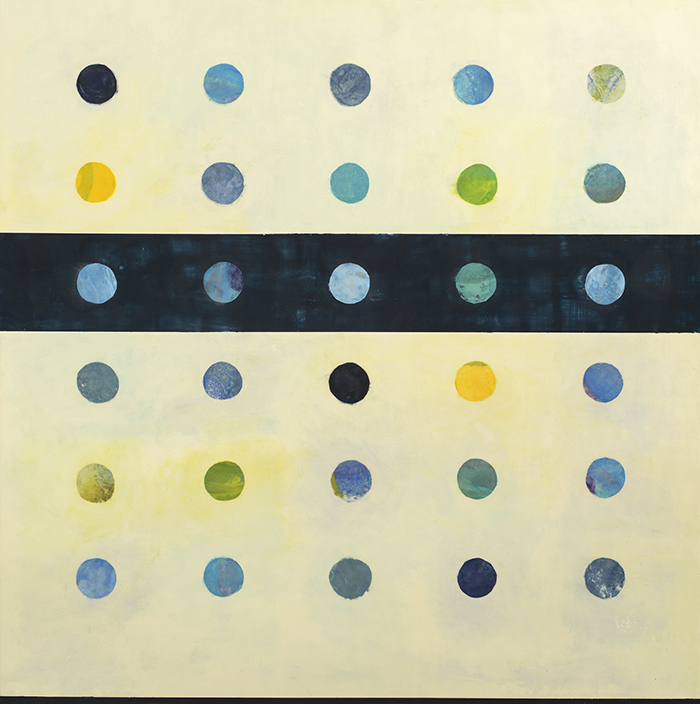
(r)evolution 4, encaustic, collage, oil on panel, 36×36, 2014
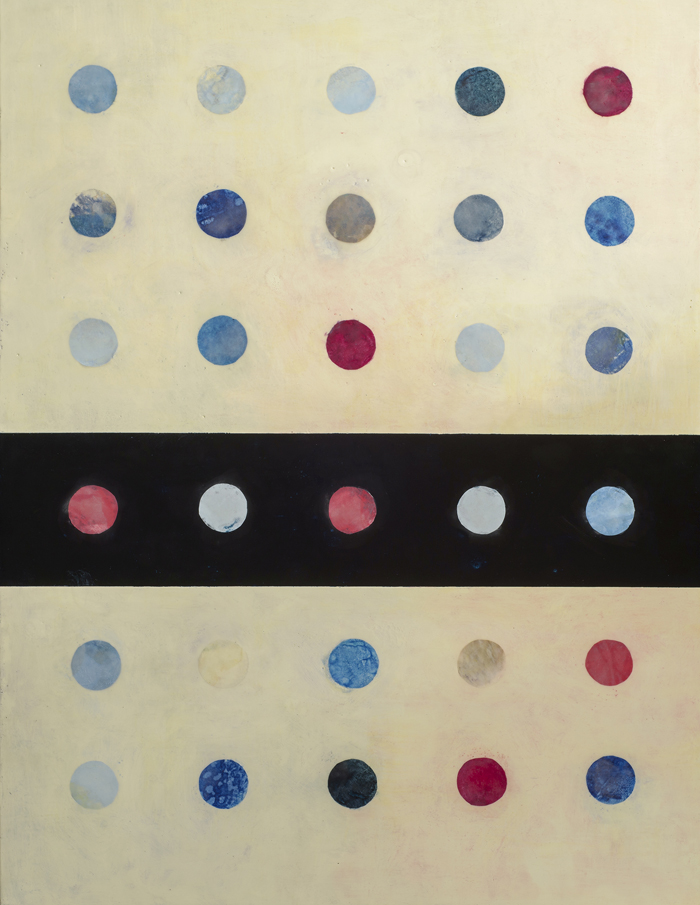
(r)evolution 5, encaustic, collage, and oil on panel, 40×30, 2014
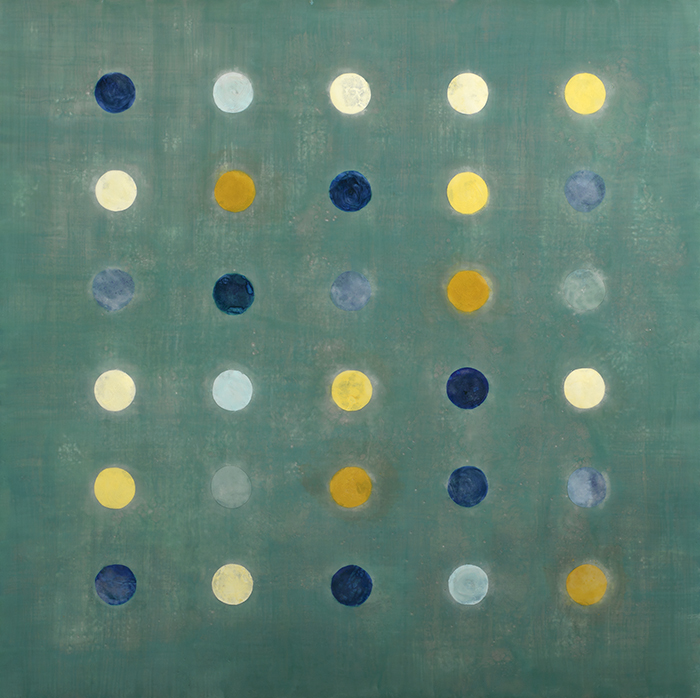
(r)evolution 6, encaustic, collage and oil on panel, 36×36, 2014
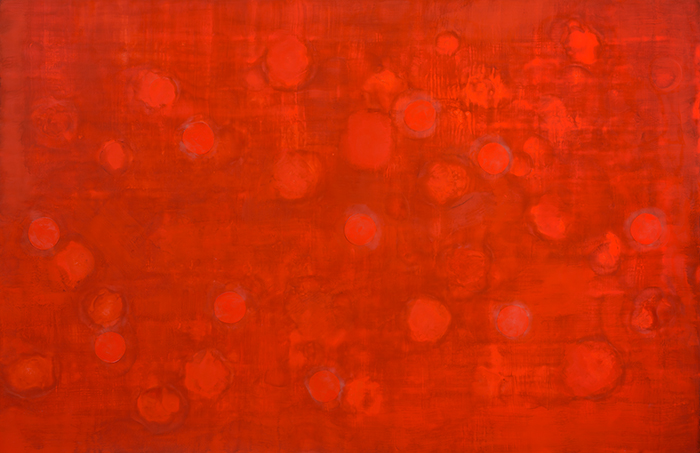
(r)evolution 7, encaustic, collage and oil on panel, 30×40, 2014
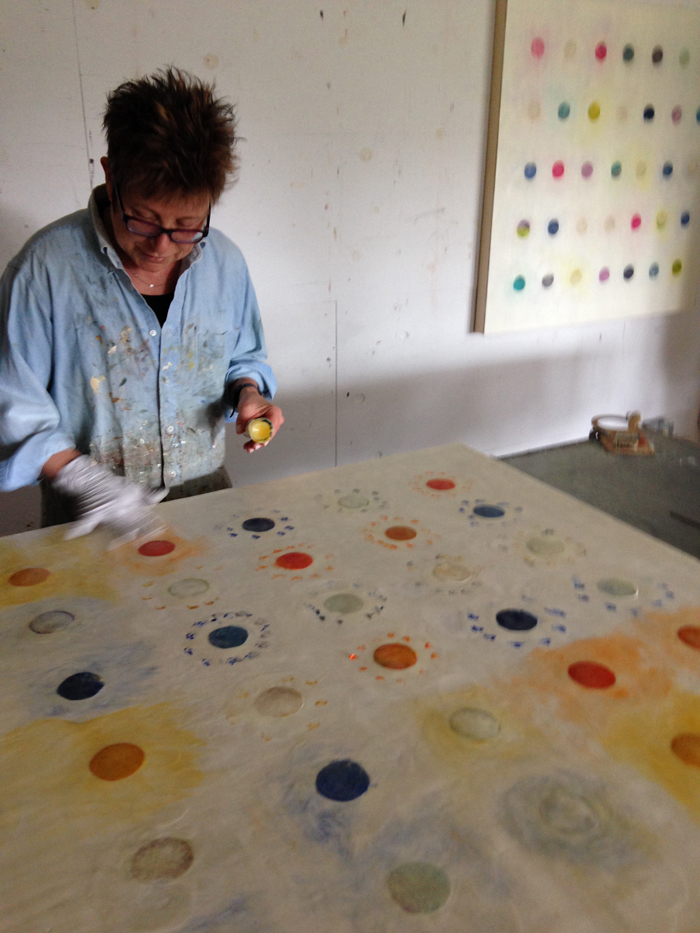
Artist Statement: When printmaking and painting, I work in series by creating an initial motif and then exploring permutations of the theme using color, pattern, line and shape. Influenced and inspired by my study of music theory, I am drawn to the intersections of music, art and math. My process includes repeating patterns, using mathematical calculations and developing serial systems based on geometric structures such as the grid. Each series I create has a natural evolution and connection to the next resulting in a synthesis of intention and chance. I work with a variety of media choosing the materials that communicate my ideas best; my recent pieces are created using encaustic, oil, acrylic, graphite, ink and collaged prints.
by Tracey Adams | Dec 30, 2013 | Blog
Geoform (www.geoform.net) is an online scholarly resource and curatorial project, founded by Julie Karabenick almost 10 years ago. Its focus is on the use of geometric form and structure in contemporary abstract art. Artists included in this project number 260 and are from approximately 25 different countries. It is a monumental and amazing collection of some of the finest geometric art around.
The scope of work included in Geoform includes works on paper, works on canvas and panel, and sculpture utilizing traditional media to repurposed and recycled materials. These artists are inspired by nature, spirituality, music, poetry, mathematics as well as formal aspects of art like color and shape. The variety of formal structures used to organize these extraordinary works includes grids, optical illusions and universally recognized shapes like circles, dots, squares, rectangles, triangles and bands of color. Some work is reductive and minimal, other patterned and repetitive.
It was very difficult to limit my choice of work to only 20 artists, my self-imposed number, but I wanted to introduce the work of some unfamiliar artists as well as groundbreakers in the field of geometric art. My sincere apologies to all the wonderful work of colleagues whose work was not included.
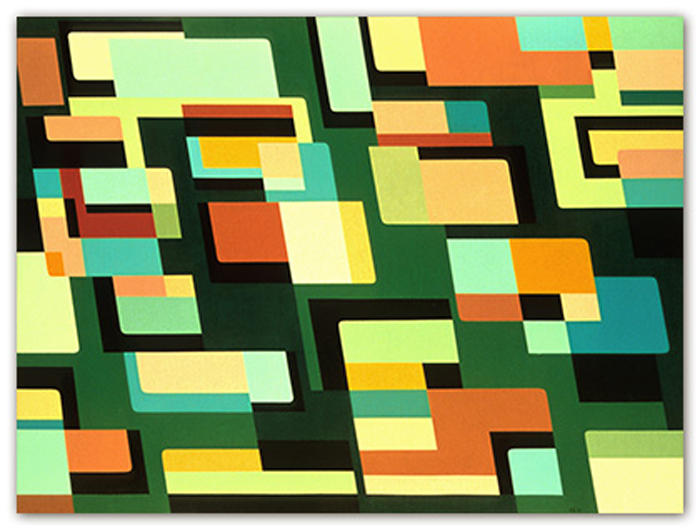
Karl Benjamin, Red, Yellow, Green, oil on canvas, 1957
“Color in the hands of a painter resists verbal definition because it has nothing to do with words, nor with theories nor with physics of light. Color is the subject matter of painting.”
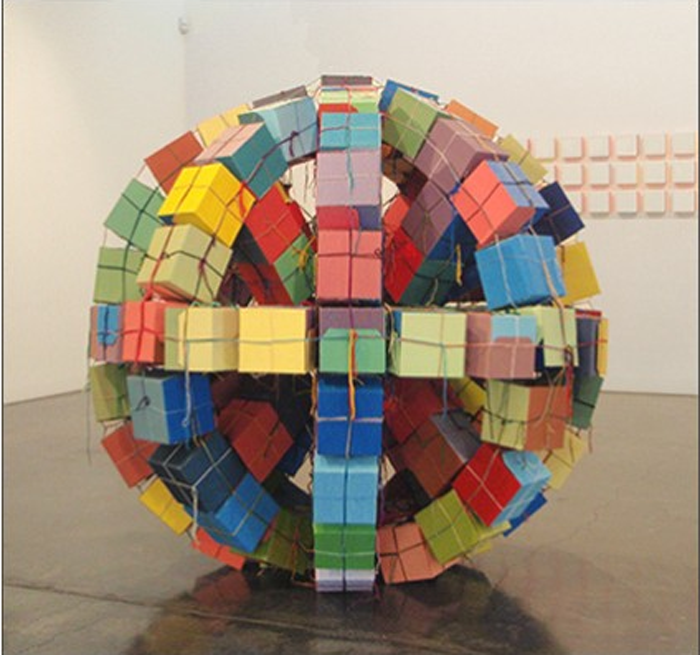
Kate Mackay, Large Round Cube, acrylic on cardboard with yarn, 2011
“The work has become progressively concerned with process and random difference within uniformity. Series of works are created by repeated combinations of simple elements concentrating on the repetition of blocks, squares and circles.”
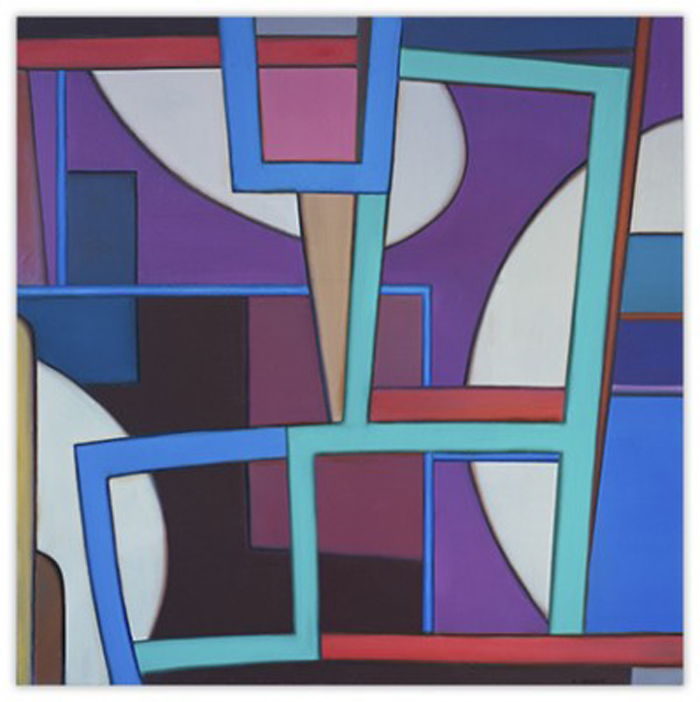
William Conger, Red Summer, oil on canvas, 2012
“I want my paintings to be metaphorical in the sense that although they depict nothing abstracted, they are ‘as-if’ alternatives to our experiences in the world.”
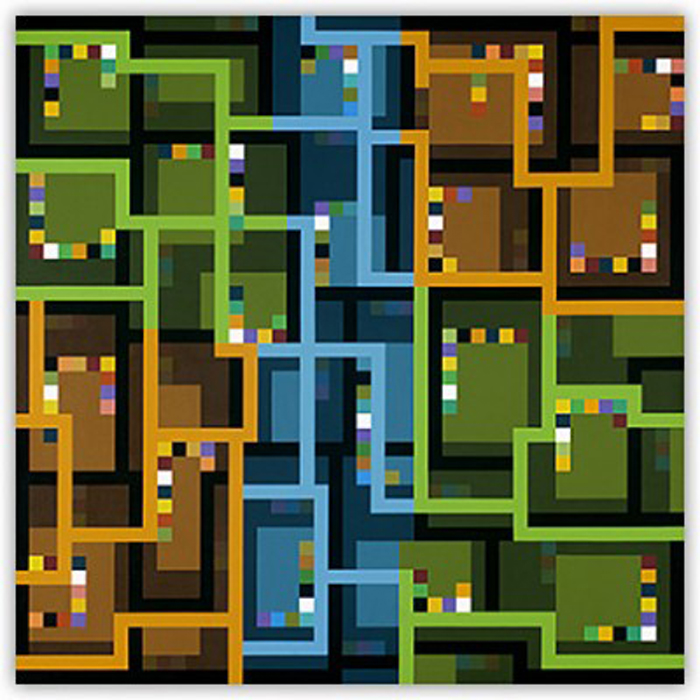
Julie Karabenick, Composition 109, acrylic on canvas, 2010
“In the paintings from my ongoing series Composition Series, I limit myself to a few geometric shapes – to squares and rectangles of flat, uninfected color. From the stability and symmetry of the grid, I develop compositions that are to some degree asymmetrical and dynamically balanced.”
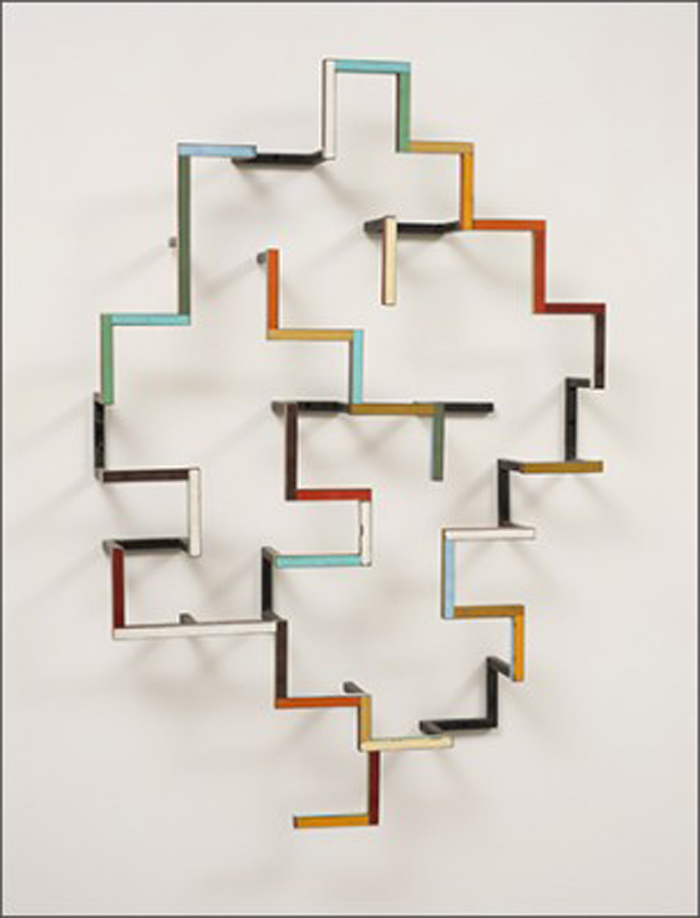
Ted Larsen, Loose Knot, salvage steel, welded steel, silicone, hardware, 2013
“I am constructing assemblages of deitrus in order to repurpose the materials and re-identify their meanings: to re-contextualize and re-label the idea of readymades.”
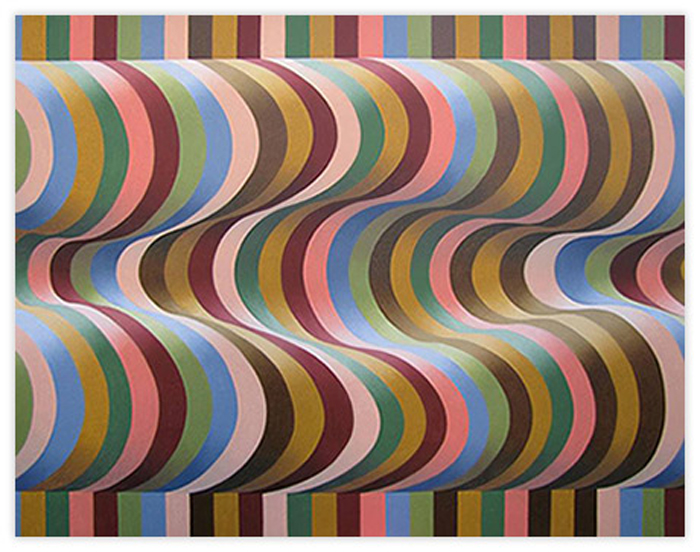
Yuli Geszti, Suite for 7 Colors to Celebrate the Overthrown Centenary Tree, acrylic on canvas, 2013
“My work is motivated by a challenge: to create the illusion of three-dimensional volumes on the flat surface of the canvas, using only brushes and ink.”
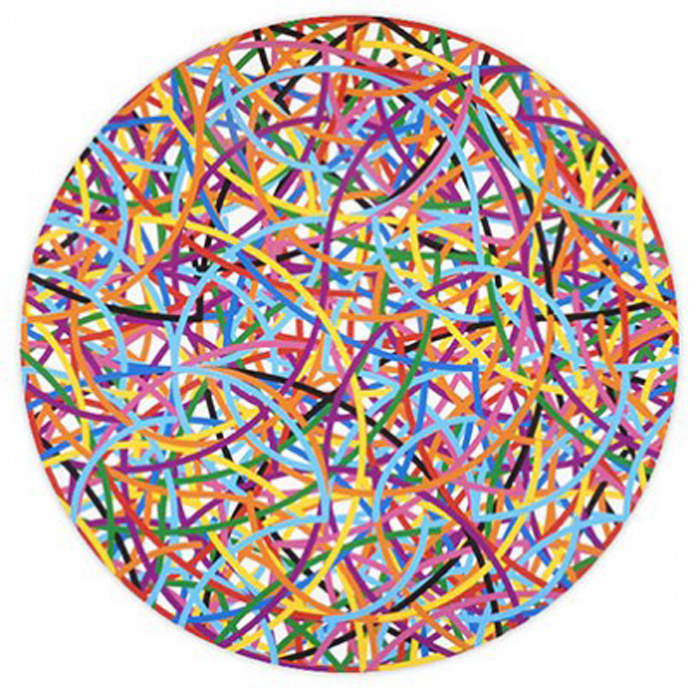
Per Formo, Ganymede 1, digital print on paper mounted on aluminum, 2012
“I want to make the act of looking into a conscious effort both to actually see what you’re looking at, and, at the same time, to observe the act of seeing: what you do when you see, how you are working at constructing visual meaning.”
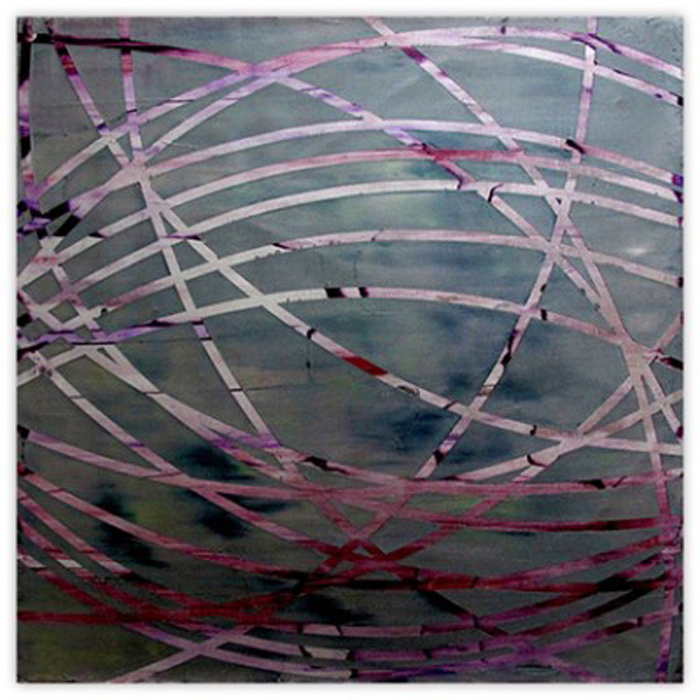
Gudrun Mertes-Frady, Nest #20, oil and metallic pigments on canvas, 2013
“Architecture and geometry have always been present in my work; even in the earlier works, the underlying matrix was the grid.”
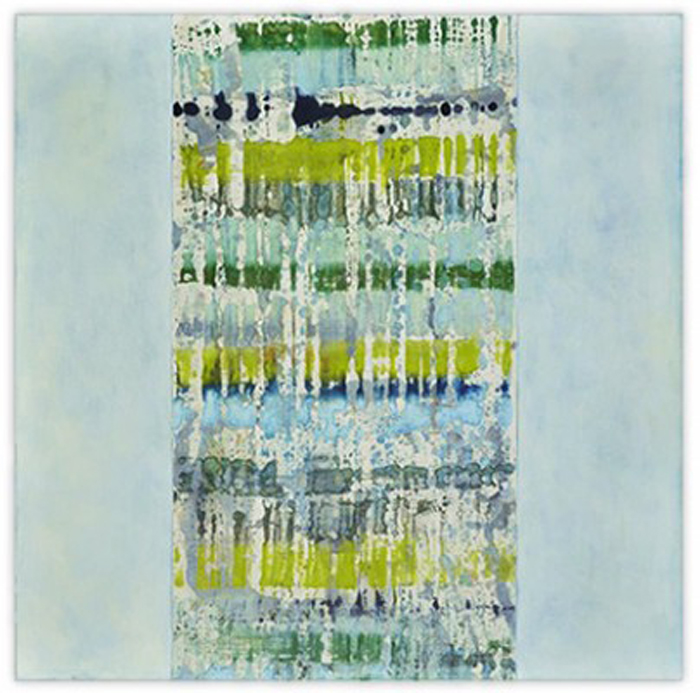
Tracey Adams, Radix 22, encaustic monotype, acrylic, oil glazes on panel, 2012
“I consistently have been drawn to forms that are sympathetic to structure, yet open to improvisation. Recent investigations into the mathematical expression of the proportional ratio found in nature, known as the Golden Section, have had an influence on my work”.
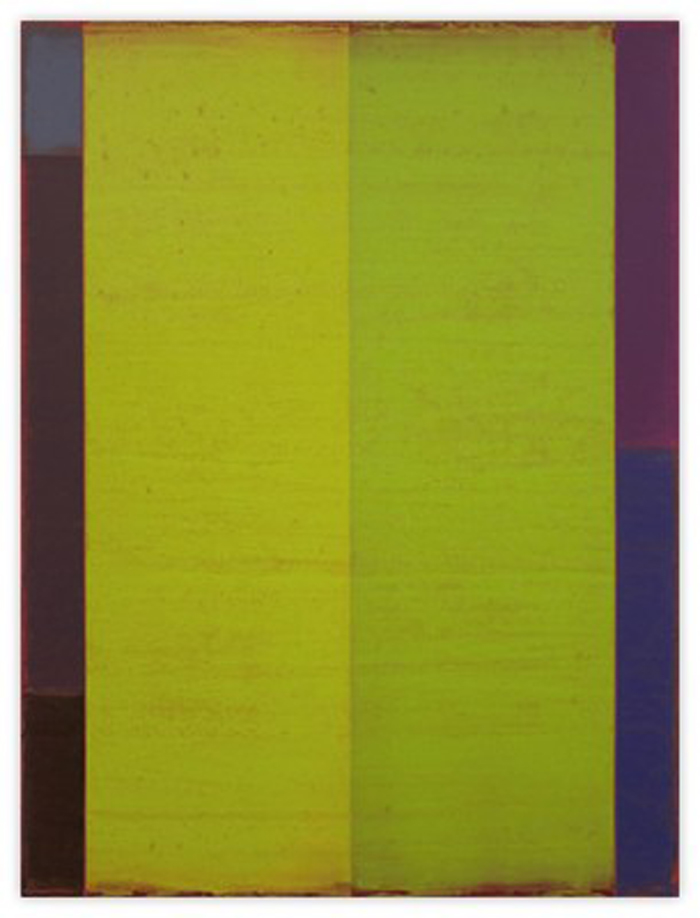
Steven Alexander, Palm (2), acrylic on canvas, 2013
“I am interested in the interaction between the painting and the viewer’s imagination, and in the painting’s potential to generate unspecified mobile meaning. Color operates in the world as a kind of pure energy – dynamic, capricious, evocative.”
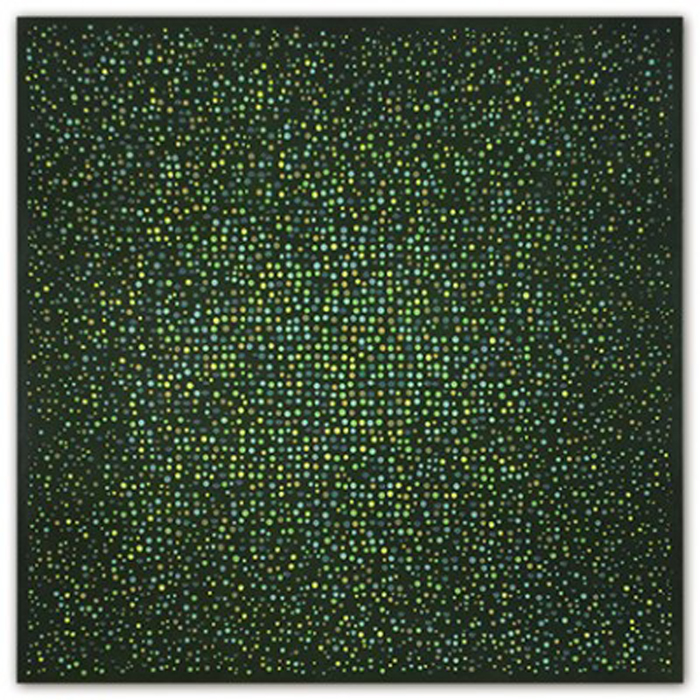
Reese Inman, Migration II, acrylic on panel, 2011
“Each painting represents dialogue between a specific computer algorithm and my hand”
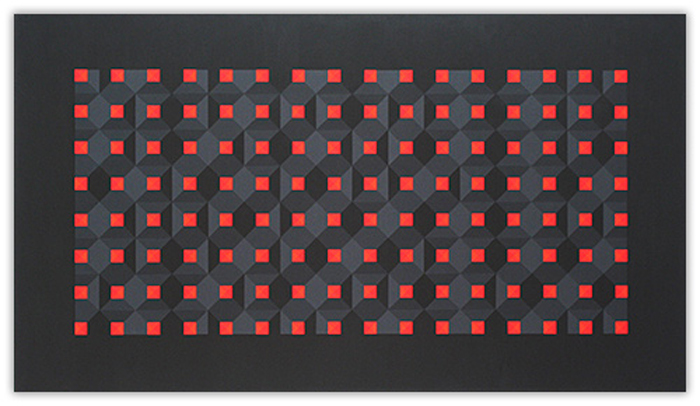
Gerhard Hotter, Pyramids XXXI, acrylic on canvas, 2013
“For more than 30 years I have been researching the pictorial and poetic potentials of mathematical structures. It’s the more playful part of mathematics-mathematics for its own sake – that attracts me.”
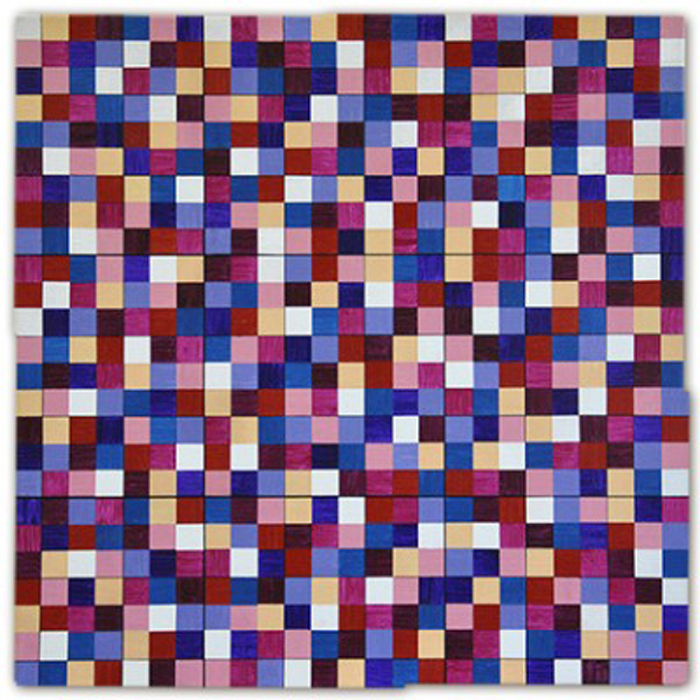
Herman Van de Poll, geoChao 145, acrylic and oil on linen, 2012
“My art has been influenced by modern scientific and mathematical approaches to understanding the complex order in nature.”
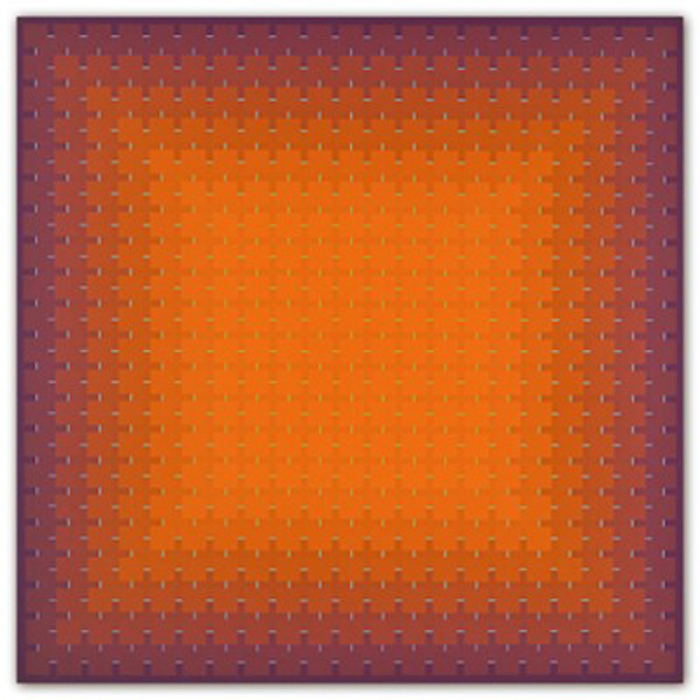
Julian Stanczak, Lumina, Offering Orange, acrylic on canvas, 1991
“My primary interest is color, the energy of the different wavelengths and their juxtapositions.”

Richard Kallweit, Triacontahedron Sphere, paper with offset printing, 2011
“I use various ideas culled from math and science to create paintings and sculptures. They are related in part to weaving technologies, which have been called the earliest higher mathematical discoveries of man.”
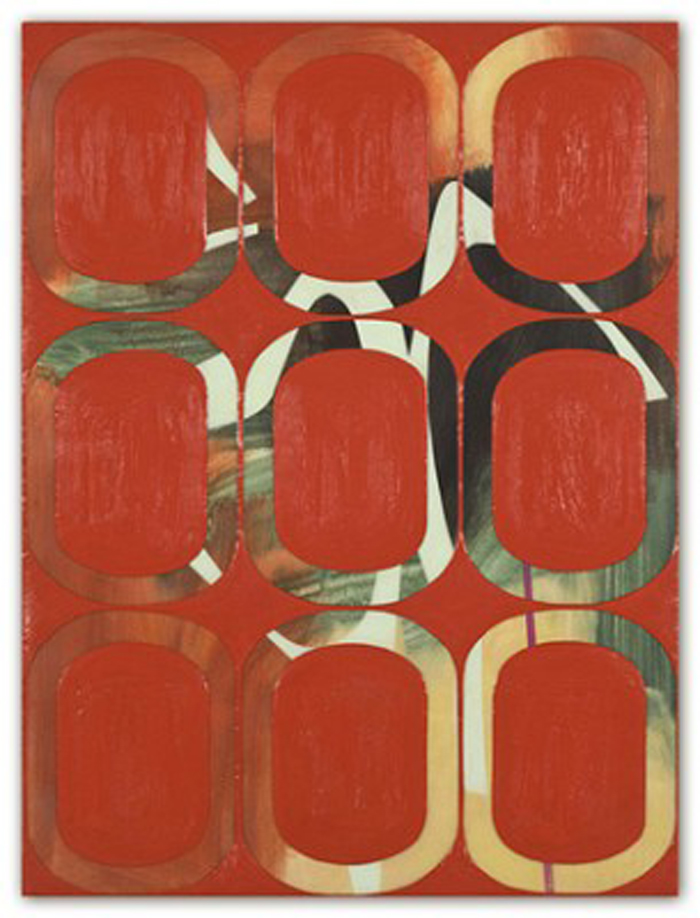
Amy Ellingson, Inverse Study #2, oil and encaustic on panel, 2010
“My interests lie in the practice of formal repetition, variation and mutation within limited serial systems and networks. The paintings consist of many interrelated layers of repeating geometric forms-lines, arcs and grids-that I compose on the computer.”
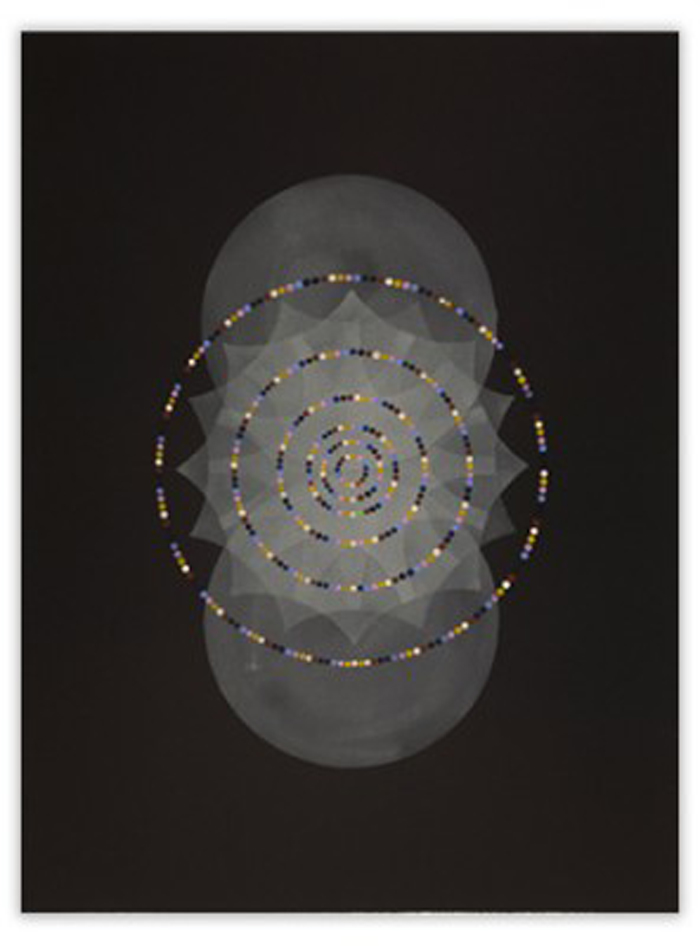
Grace DeGennaro, Ballinglen #21, watercolor on Somerset paper, 2013
“I am interested in the power of traditional symbols and sacred geometry to communicate ideas that lie beyond the limitations of language and culture.”
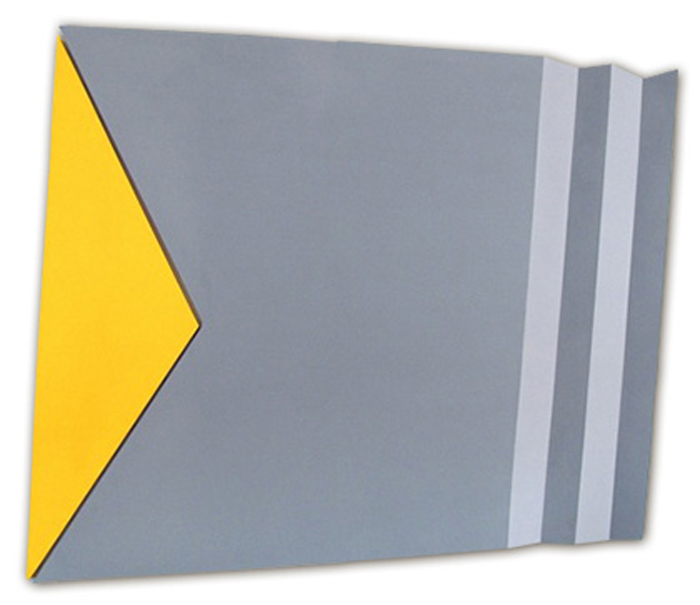
Raphael Durans, Pliage No. 116 (diptych), acrylic on canvas, 2011
“What interests me about all is proportion-what I call intuitive proportion. Using irregularly shaped canvases, I examine space beyond the square or rectangle.”
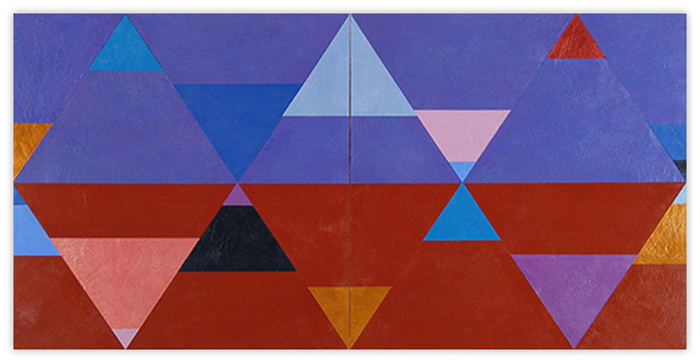
Joanne Mattera, Chromatic Geometry 13, encaustic on panel. 2013
“My paintings are succulent in color and reductive or repetitive in composition. I usually refer to my esthetic as “lush minimalism.”
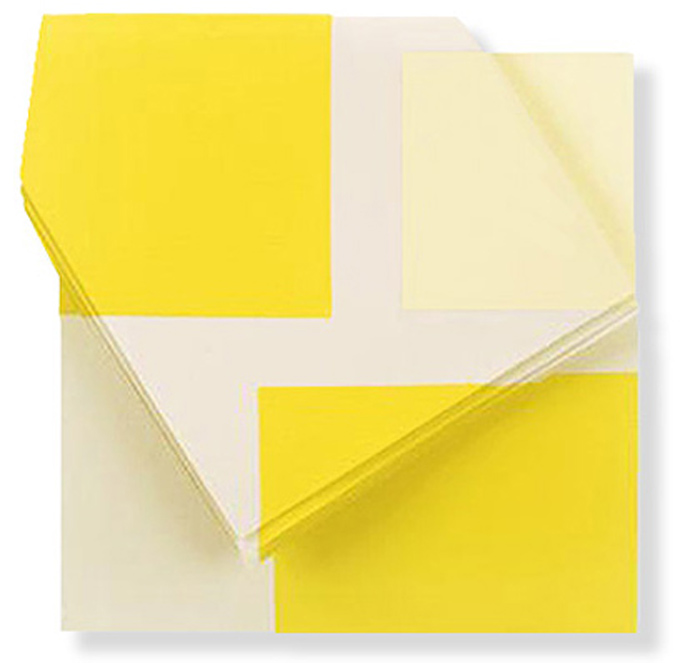
Luciano Figueiredo, Relief #2, acrylic on canvas, 2009
“Throughout my years of making art, all of my research with basic formal elements such as color, volume, space and light has had a strong relationship with the other arts such as poetry, film, music and graphics as well.”
All images are courtesy of www.geoform.net. I invite you to visit the website and explore further the wealth and variety of geometric art and fascinating artist interviews that Julie has curated.
by Tracey Adams | Dec 2, 2013 | Blog
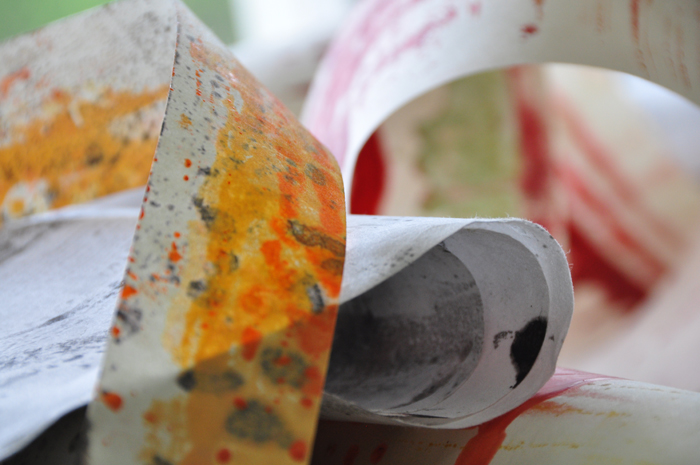
Elaine de Kooning said it so well, “Collage is a marriage of accident and intention.” Collage is one of the most soul-satisfying studio practices I do at any time, any place and with any materials on hand. It functions like a journal posting in that I don’t often share it with others. It reflects my state-of-mind on a given day in that it can be dark, whimsical/fun, or meditative. It can be geometric, organic or a combination of both. It can be bright and colorful or monochromatic. While I never have an idea of where I’m going or what a collage will look like when finished, it is precisely that aspect that provides the necessary component of intrigue to keep me engaged. Sometimes, collage has sparked a new direction in my work so I try to let it have a life of its own. I love looking at other artists’ collages and assume that those of us who share this love of medium do it for similar reasons. Some collages are politically and narratively driven, some are playful and personal, and some have more formal intentions. Below is a group of some of my favorite collage artists.
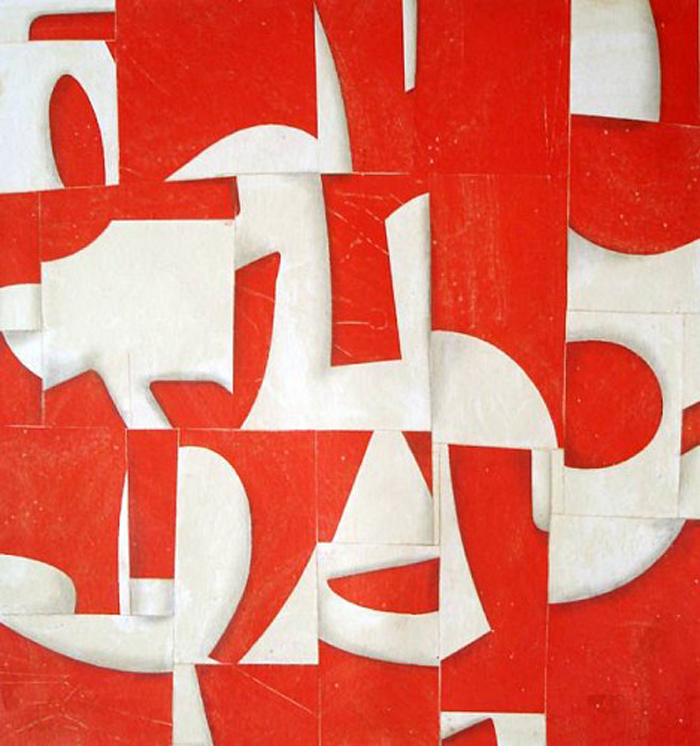
Cecil Touchan, Untitled, www.searspeyton.com
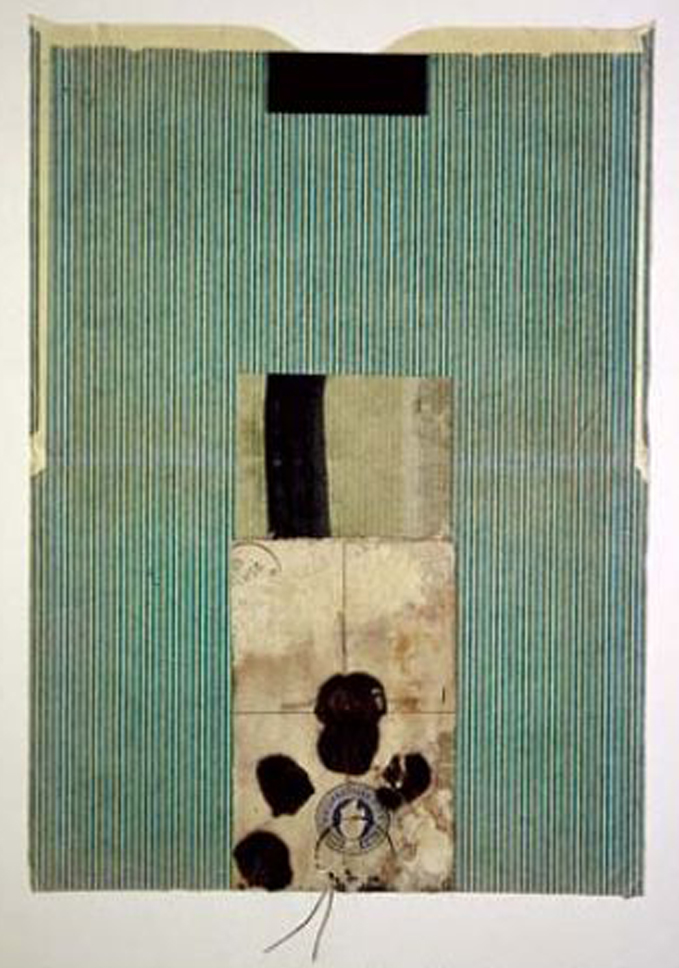
Dennis Parlante, Stability, www.dennisparlante.com
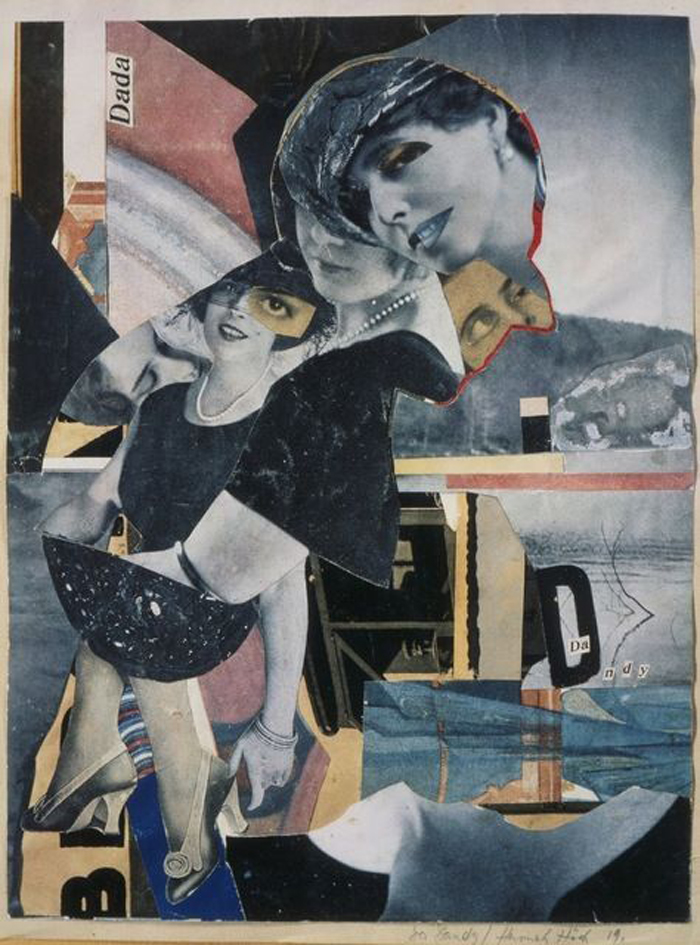
Hannah Hoch, Untitled, www.artsy.net
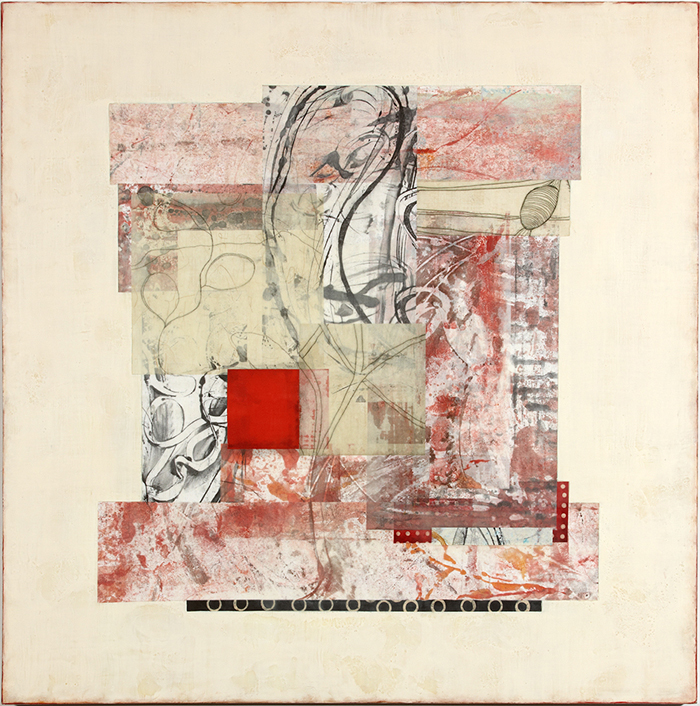
Tracey Adams, Radicle 14, www.montereyart.org

Kim Frohsin, Coke, Popcorn, Circus, Diamond, www.bryantstreet.com
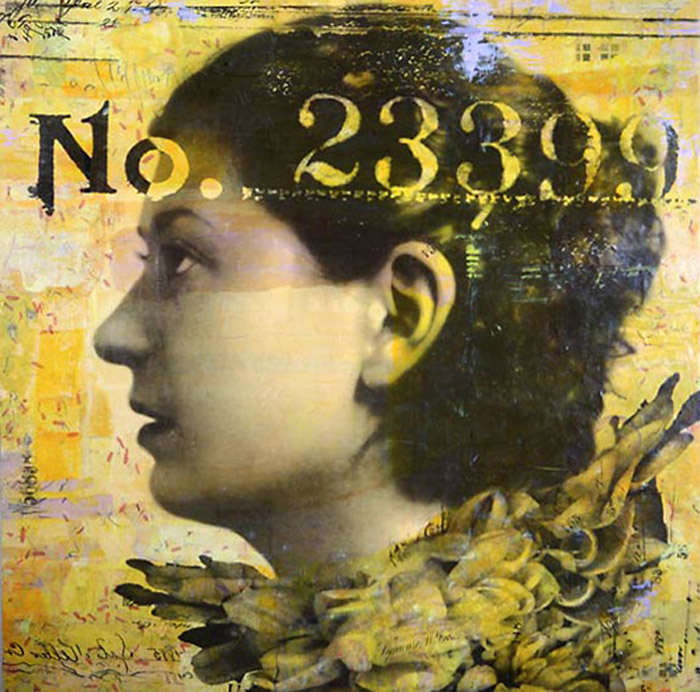
Marybeth Rothman, Amelia, www.marybethrothman.com
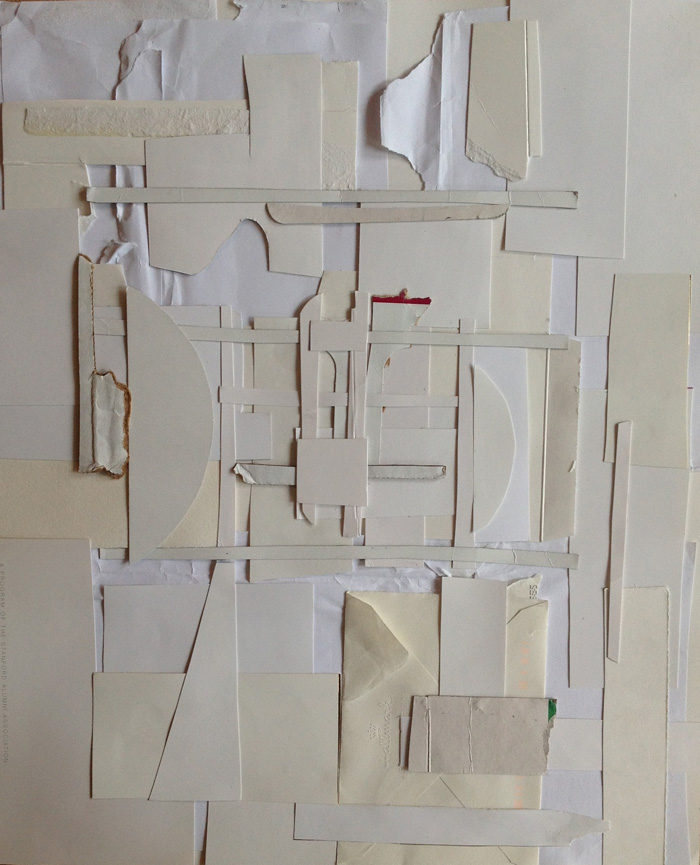
Matt Gonzalez, White 1, www.sfcollagecollective.wordpress.com
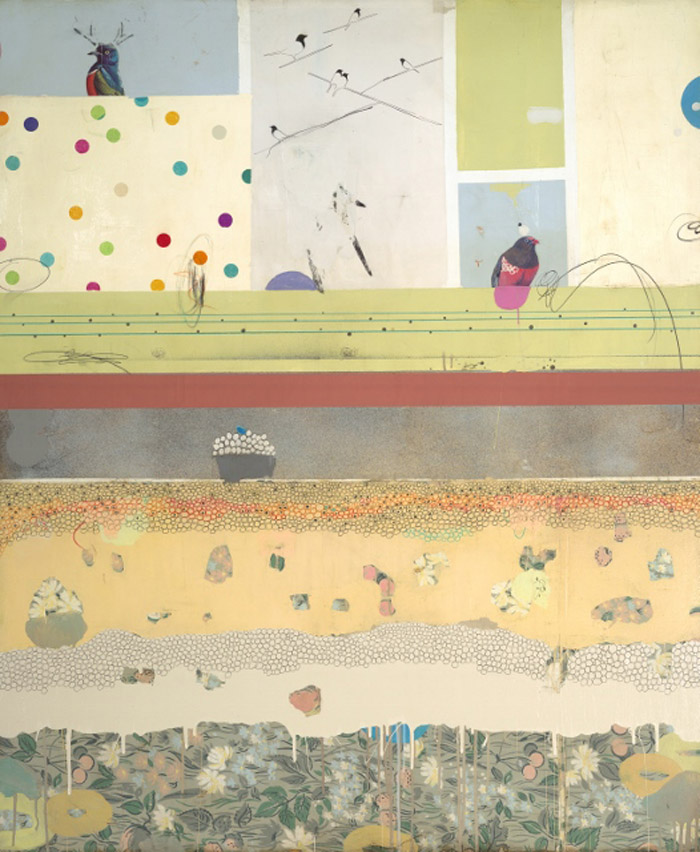
Michael Cutlip, Bird-on-a-Wire, www.michaelcutlip.com
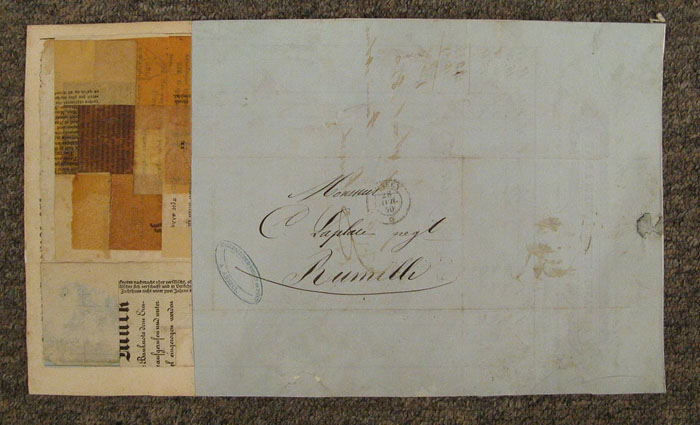
Michael Pauker, www.michaelpaukerblogspot.com
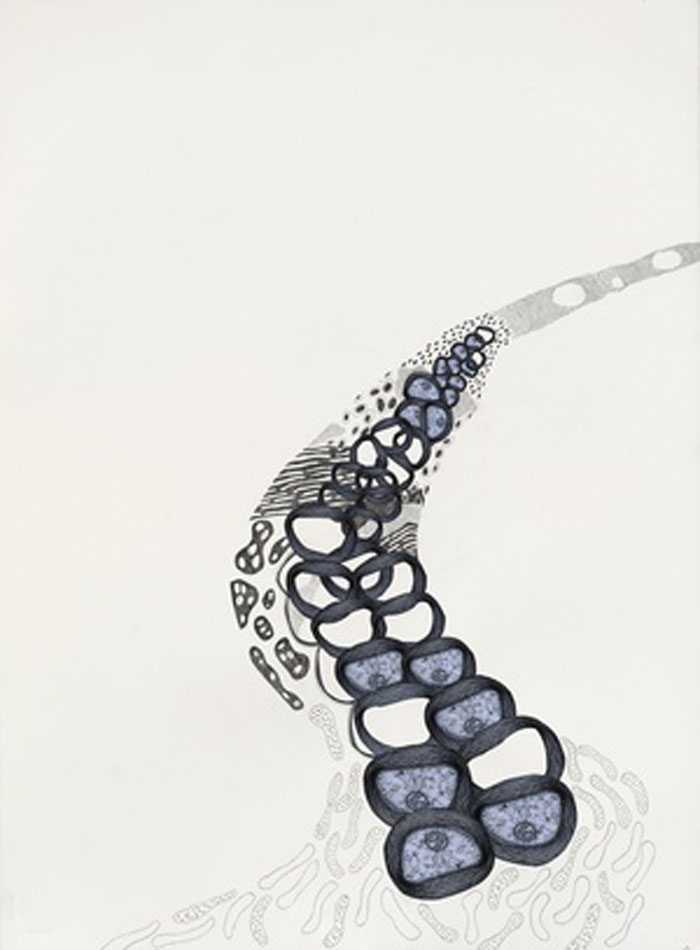
Kirsten Stolle, Genetic Erosion, www.kirstenstolle.com
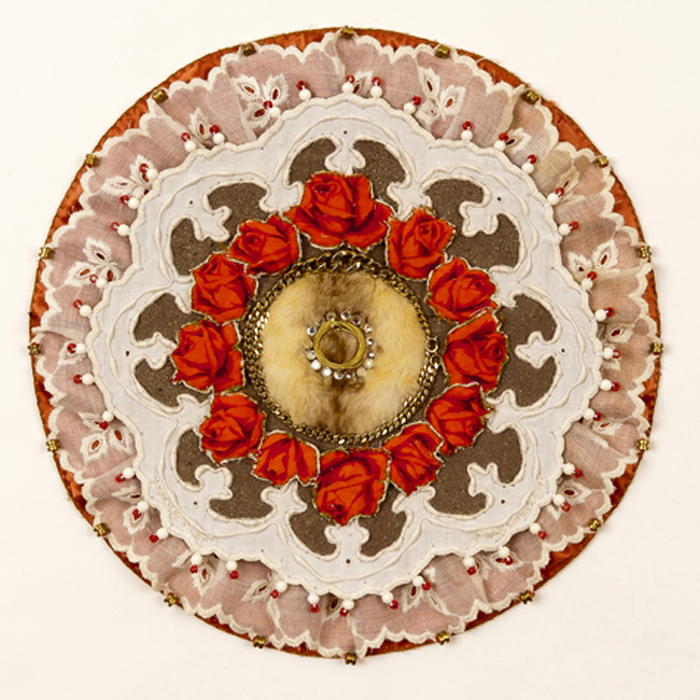
Donna Sharrett, Magnificent, www.pavelzoubok.com
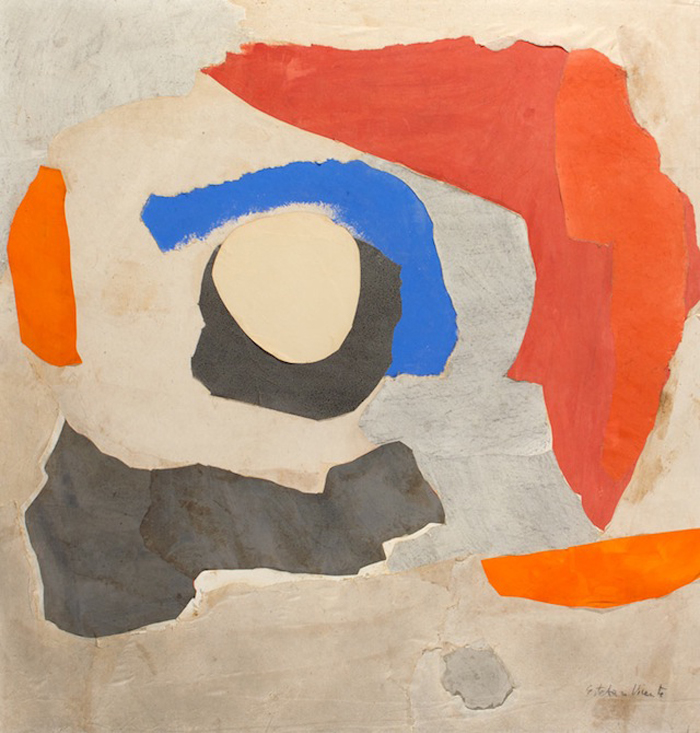
Esteban Vicente, Hawaii, www.hyperallergic.com
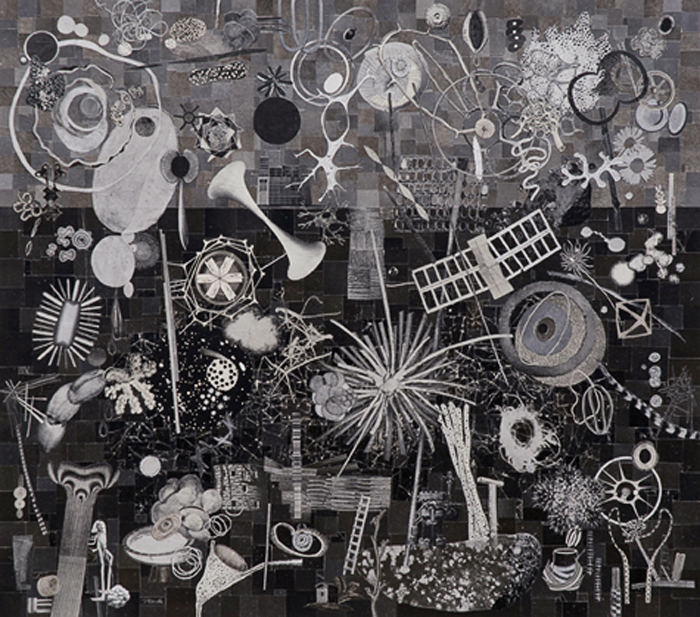
Maritta Tapanainen, Frontera, www.pavelzoubok.com
by Tracey Adams | Oct 31, 2013 | Blog
From 1945 through 1975, many artists from the U.S., through random exchanges, shared ideas and artistic styles with a group of Asian-American artists from Japan, China and Korea. While some of these artists were born in America and others emigrated, their influence and inspiration was seen and felt by many. Today, many of them remain in relative obscurity. Visually, their work contained calligraphic gestures learned from families and friends. Other work was reductive, incorporating large flat fields of color, sometimes featuring geometric shapes, repetition of lines and dots, suggesting nature in abstraction. Their work was connected to the philosophies of Buddhism, Confucianism, and Taoism – calling upon the self to be removed from focus, held at a distance. Cross-pollination occurred between the Asian artists and their non-Asian counterparts, from west to east coast and academia to exhibition.
Hans Hofmann, deeply influenced by the work of these Asian artists said, “The ability to simplify means to eliminate the unnecessary so that the necessary may speak.” The aesthetic of quiet elegance is powerful and remains influential and inspirational by many to this day. The following images include some favorite Asian and non-Asian artists as well as a few contemporary artists, myself included.
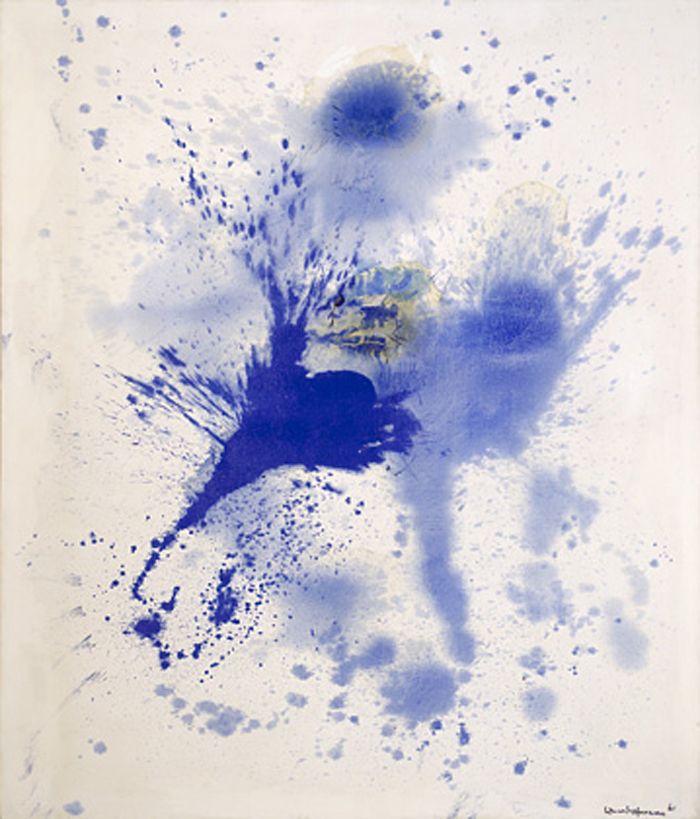
Hans Hofmann, Astral Nebula, www.hanshofmann.org
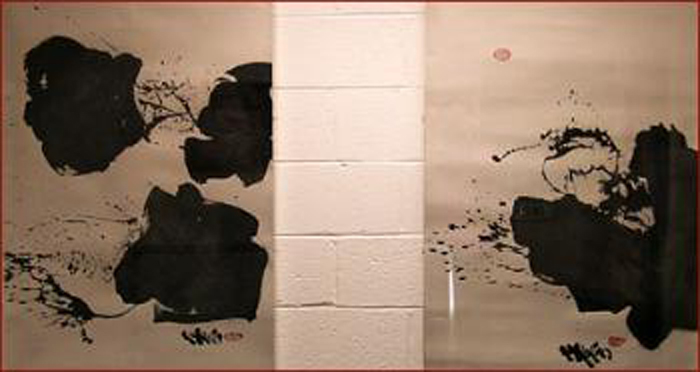
Wang Ming, Untitled, www.fairfield.edu
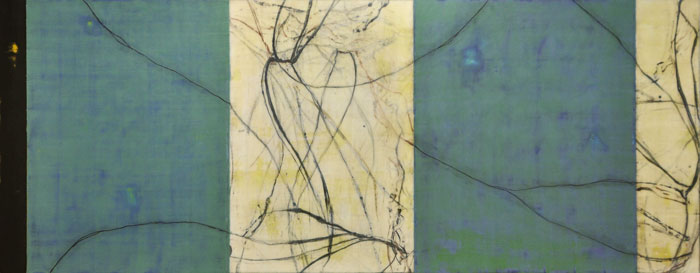
Tracey Adams, Imago 83, www.traceyadamsart.com
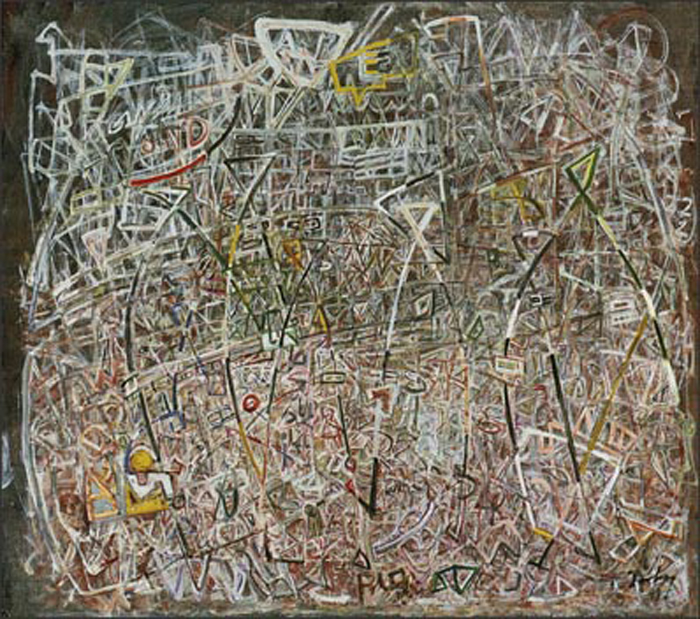
Mark Tobey, Night Celebration II, www.abstractartist.org
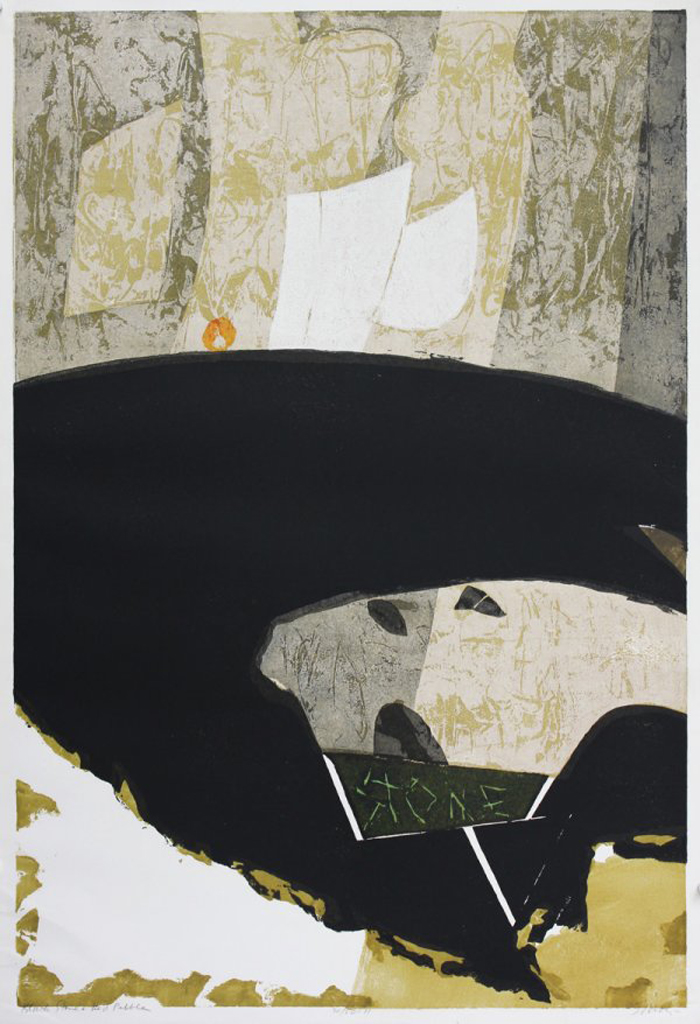
Seong Moy, Untitled, www.keithsheridan.com
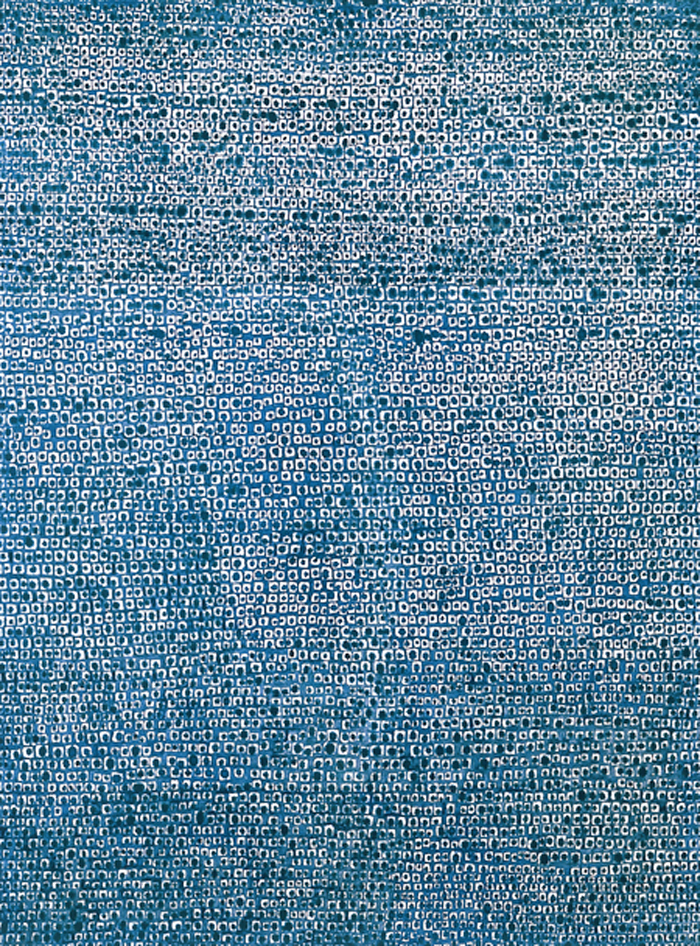
Whanki Kim, Where, in What Form, Shall We Meet Again?, Courtesy of Gallery Hyandia
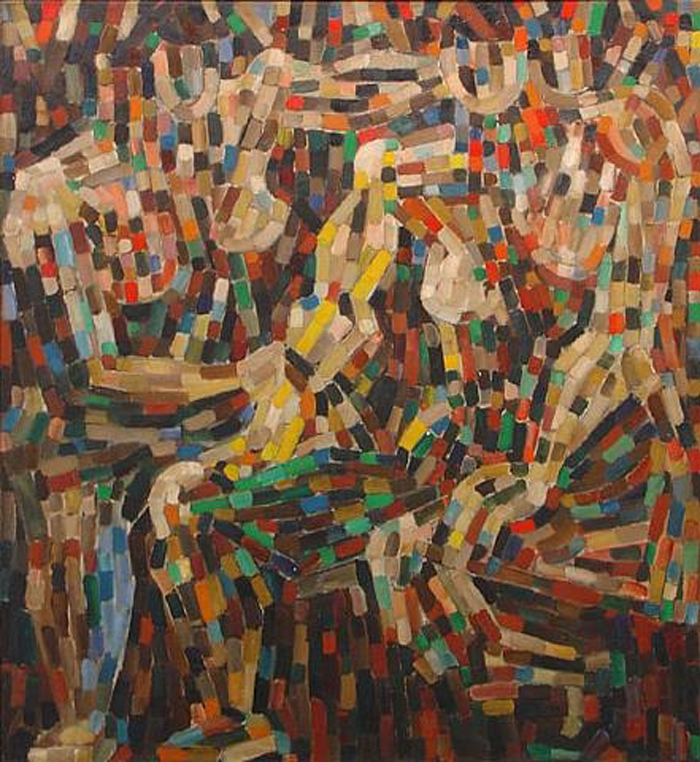
Jan Mueller, Seated Figures, Courtesy of Lori Bookstein Fine Art
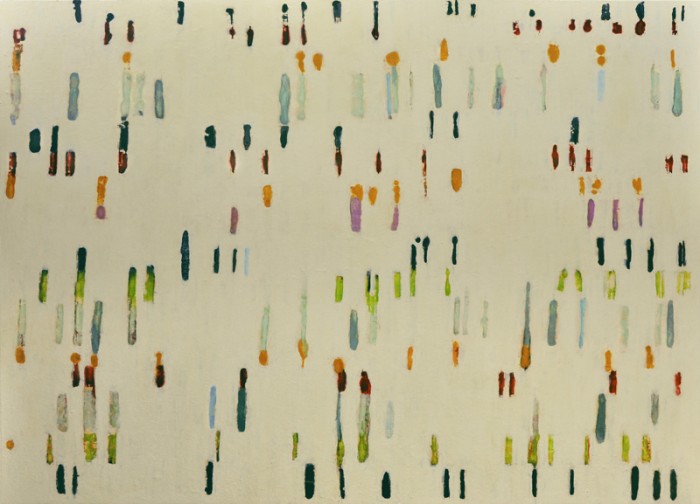
Tracey Adams, Lumenis 9, www.traceyadamsart.com
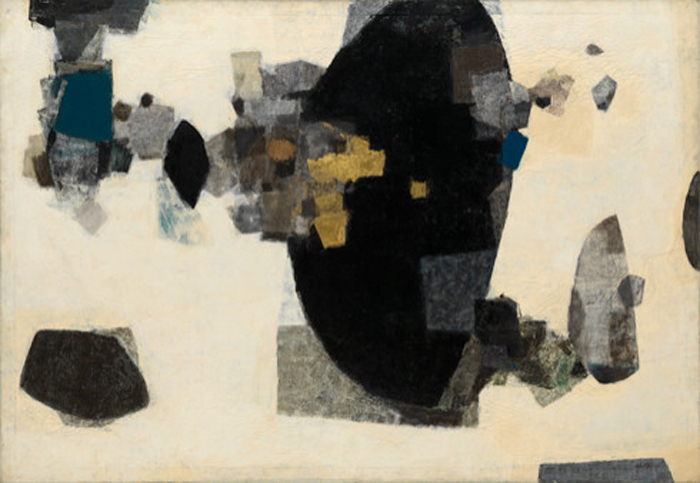
Yutaka Ohashi, Stone Garden, www.guggenheim.org
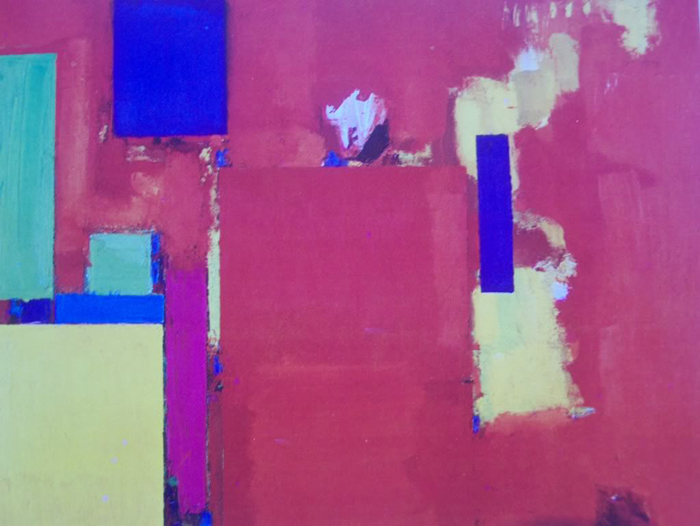
Hans Hofmann, The Golden Wall, www.hanshofmann.org

Tremain Smith, Opening, www.tremainsmith.com

Masatoya Kishi, Opus No 64 C-11, www.askart.com
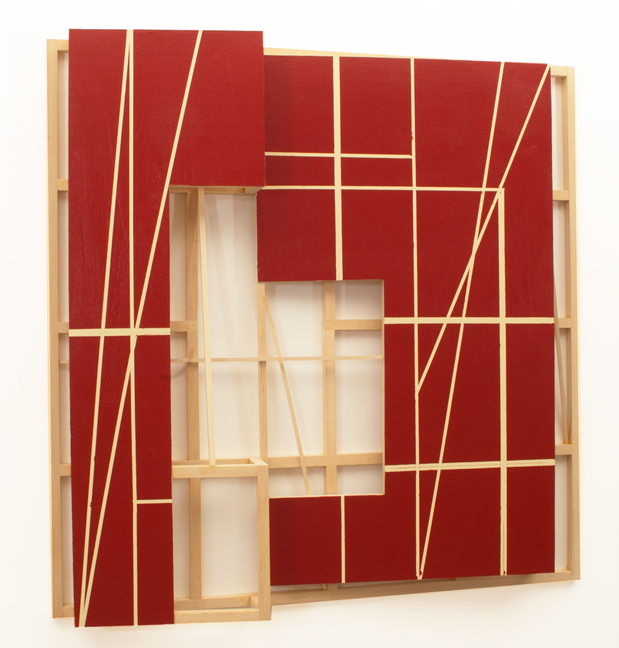
Howard Hersh, Skin Deep 7, www.howardhersh.com
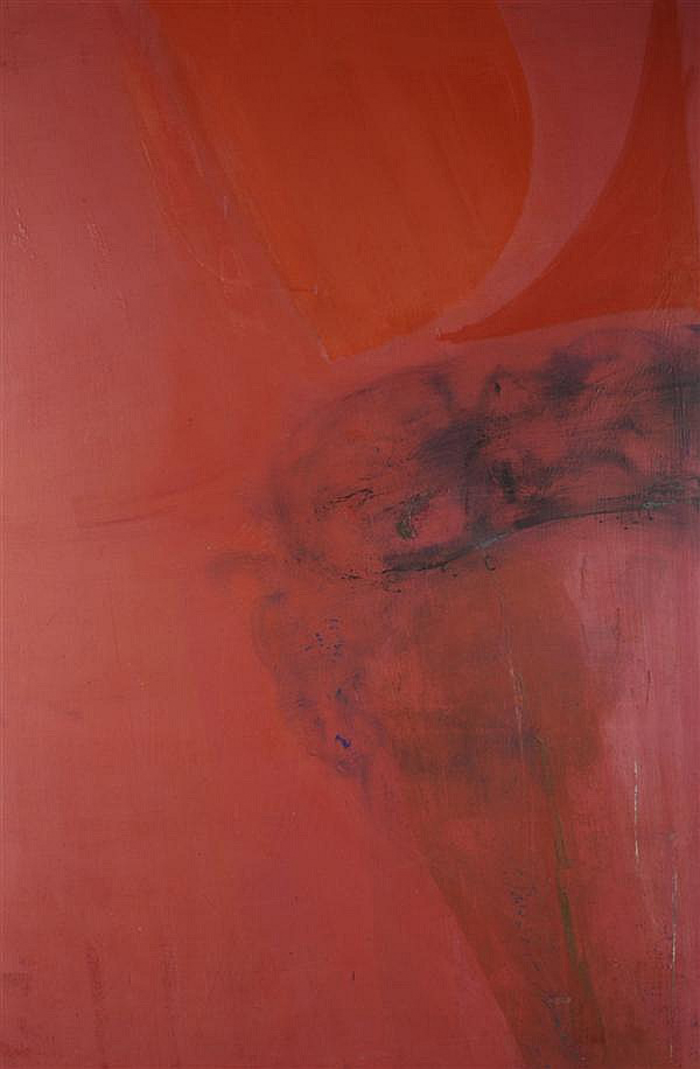
Minoru Kawabata, Pink One, www.artfact.com
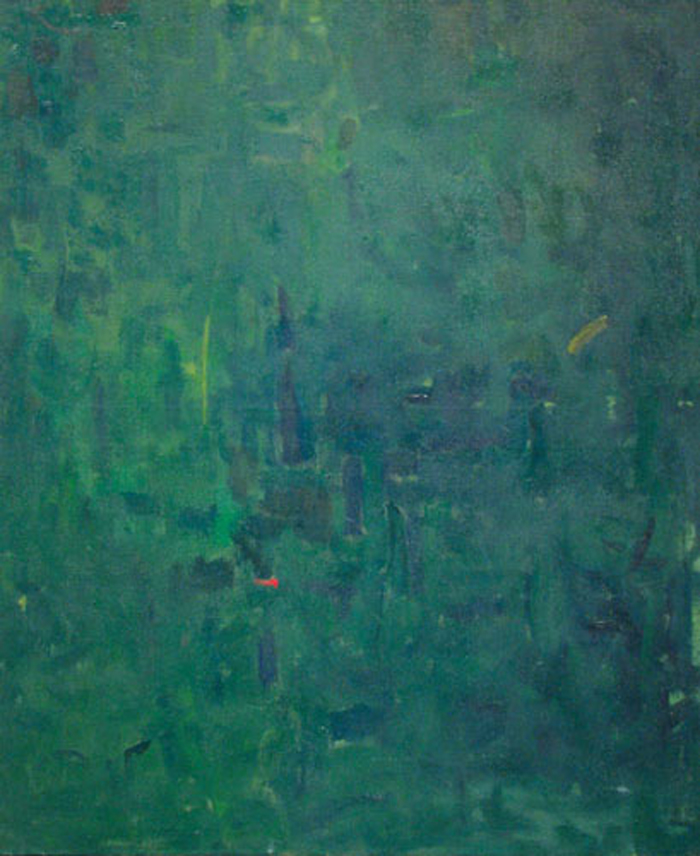
George Abend, Green, www.montereyart.org
by Tracey Adams | Sep 27, 2013 | Blog
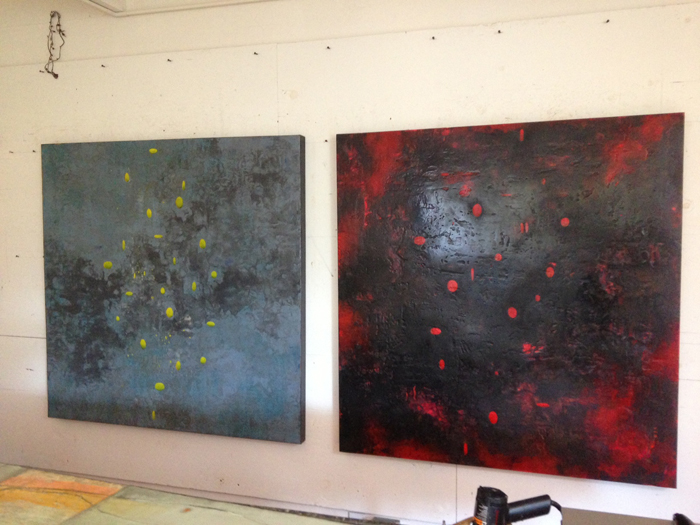
As we transition from longer days to shorter ones, I become more introspective and observe that my work continues to explore and cycle through past themes of numbers/music/circular shapes. Grapheme is a new series of paintings which focus on counting, color and my perception and interpretation of numbers and shapes as I fully experience color. Grapheme-color synesthesia has been described as the “smallest linguistic unit which may bring about a change or contrast of meaning.” Like all forms of synesthesia, grapheme-color synesthesia is for the individual involuntary, consistent and memorable. The experience differs from individual to individual. This new group of paintings is full of contrasts: hard edges of the ovoid shapes versus the softer, more cellular and aqueous ones; the patterns and rhythm of the different shapes versus the areas of quiet and repose; the topographic and textural surfaces versus those that are smooth. In this series, I use many layers of encaustic and oil to achieve luminosity and depth.
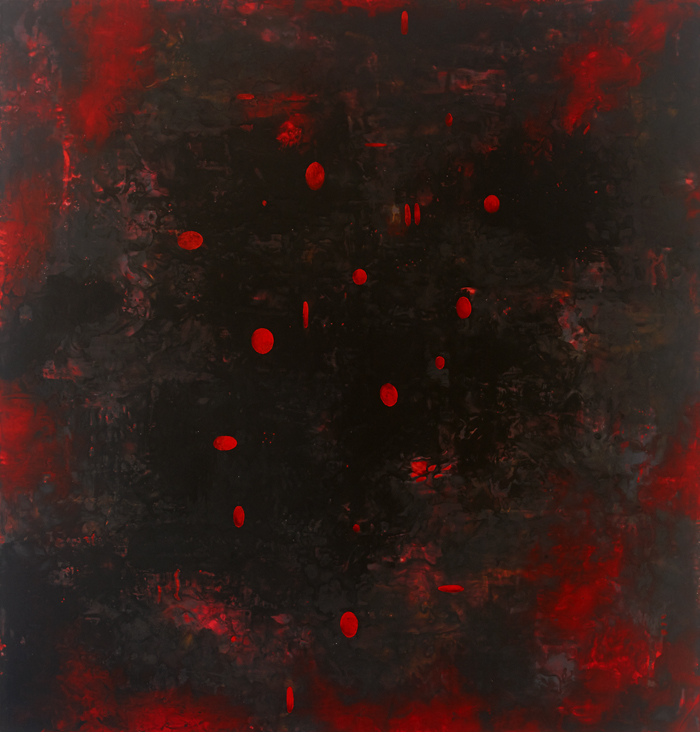
Grapheme 2, 48×48, encaustic and oil on panel
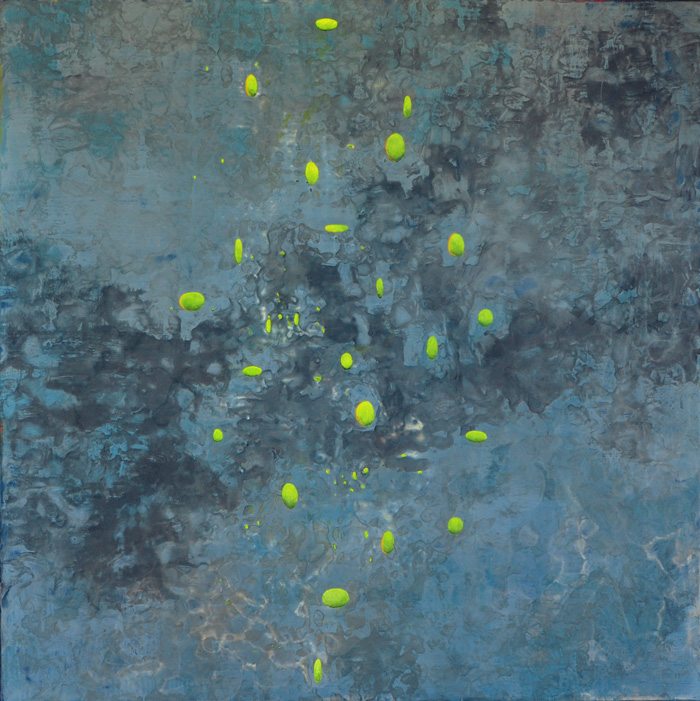
Grapheme 1, 48×46, encaustic and oil on panel
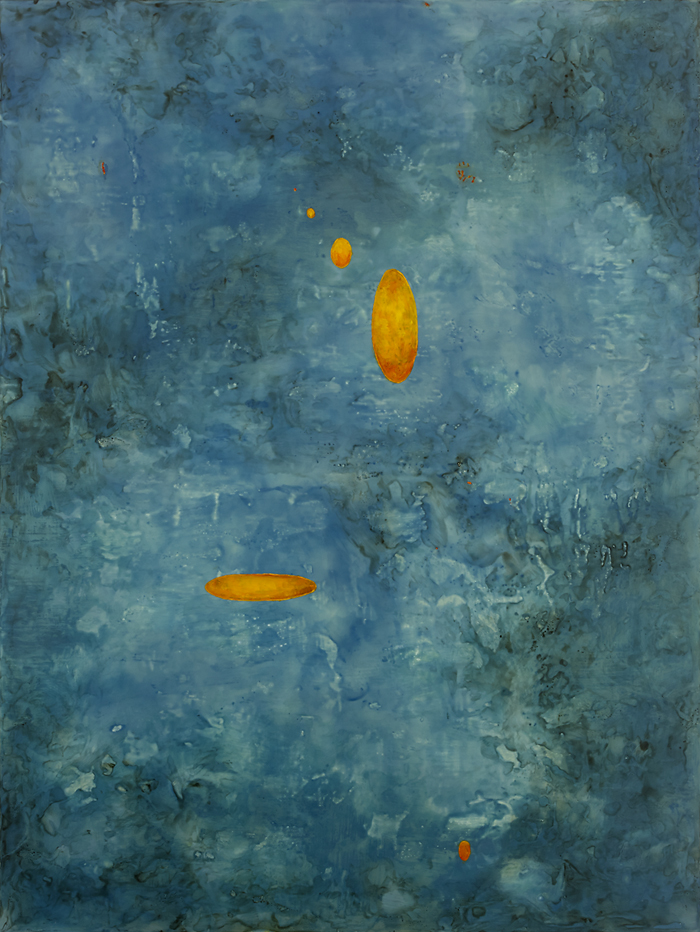
Grapheme 3, 40×30, encaustic and oil on panel
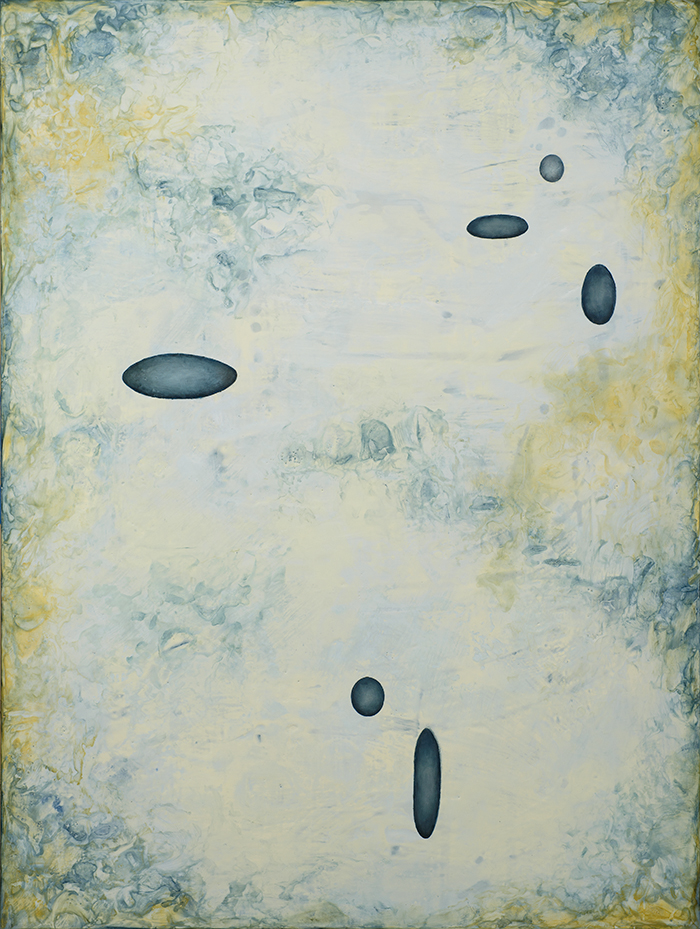
Grapheme 4, 40×30, encaustic and oil on panel
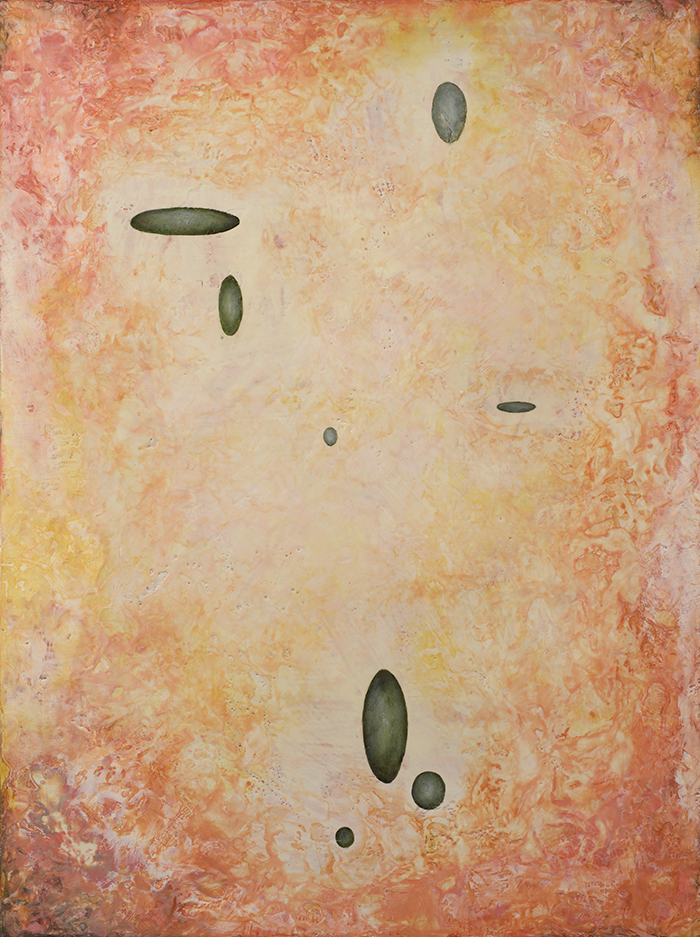
Grapheme 5, 40×30, encaustic and oil on panel
If you’re interested in learning more about encaustic, please check out this blog: www.prowaxjournal.com, filled with lot of great information.
On exhibition through October 5, 2013, Abstraction, Mark Gallery, Englewood, NJ (www.mark-gallery.com)
by Tracey Adams | May 14, 2013 | Blog
|
It’s spring and an abundance of good things are happening in the studio and in
the art world. Be sure and watch Tracey’s
newest video, RED to get an insider’s view of her work.
|
|
|
|
|
|
|
|
I will be presenting a talk – Cannibalism and the Art of Collage –
at the Seventh International Encaustic Conference, Provincetown, MA,
May 31 – June 2, encausticconference.blogspot.com.
Inclusion of my work in the following exhibitions is in conjunction with the conference:
|
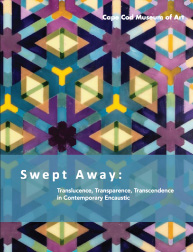 |
SWEPT AWAY: TRANSLUCENCE, TRANSPARENCE,
TRANSCENDENCE IN CONTEMPORARY ENCAUSTIC
Curator: Michael A. Giaquinto
Cape Cod Museum of Art, Dennis, MA
May 18 – June 23
CLICK HERE TO VIEW CATALOG
|
|
|
ELEPHANT IN THE ROOM
Laconia Gallery, Boston, MA
Curators: Linda Cordner and James Hull
May 30 – June 30
CLICK HERE TO VIEW CATALOG
|
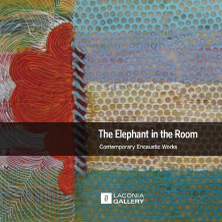
|
|
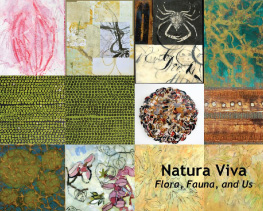 |
NATURA VIVA: FLORA, FAUNA AND US
ArtCurrent Gallery, Provincetown, MA
Curator: Debra Claffey
May 30 – June 16
CLICK HERE TO VIEW CATALOG
|
|
|
RED
A Gallery, Provincetown, MA
Jurors: Adam and Marian Peck
May 31 – June 7
|
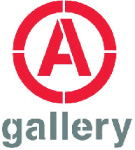
|
|
|
|
 |
INSTRUCTOR’S EXHIBITION
The Schoolhouse Gallery, Provincetown, MA May 29 – June 4
|
|
by Tracey Adams | Apr 4, 2013 | Blog
Lumenis, an exhibition of new paintings, will open at Winfield Gallery in Carmel, CA, on April 13, 2013. This series continues to explore my fascination and ongoing interest in the areas where art and music intersect and overlap: gesture, line, color space, pattern, etc. This series incorporates encaustic monoytpes (pigmented beeswax printed on Japanese papers) which are then collaged on panels and glazed with many layers of acrylic, then covered with cold wax. During graduate school as a music student, I was strongly influenced by the compositional principles of John Cage. Much of my collage work involves the process of indeterminancy, a process Cage created and worked with for much of his musical and artistic life. Decisions about mark-making involve parameters that are fixed or limited such as color, line, and shape. While I no longer perform music actively, the elements of music are deeply embedded in me, appearing in my paintings as visual compositions.
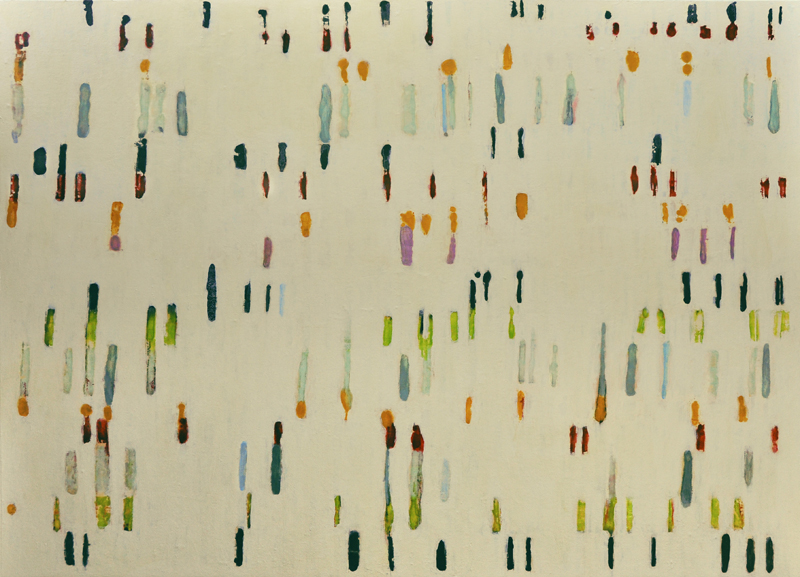 Lumenis 9, encaustic monotype and acrylic glazes on panel, 39×54
Lumenis 9, encaustic monotype and acrylic glazes on panel, 39×54
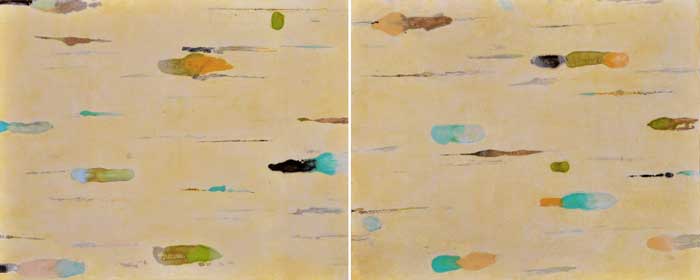
Lumenis 18, encaustic monotype and acrylic glazes on panel, 16×40
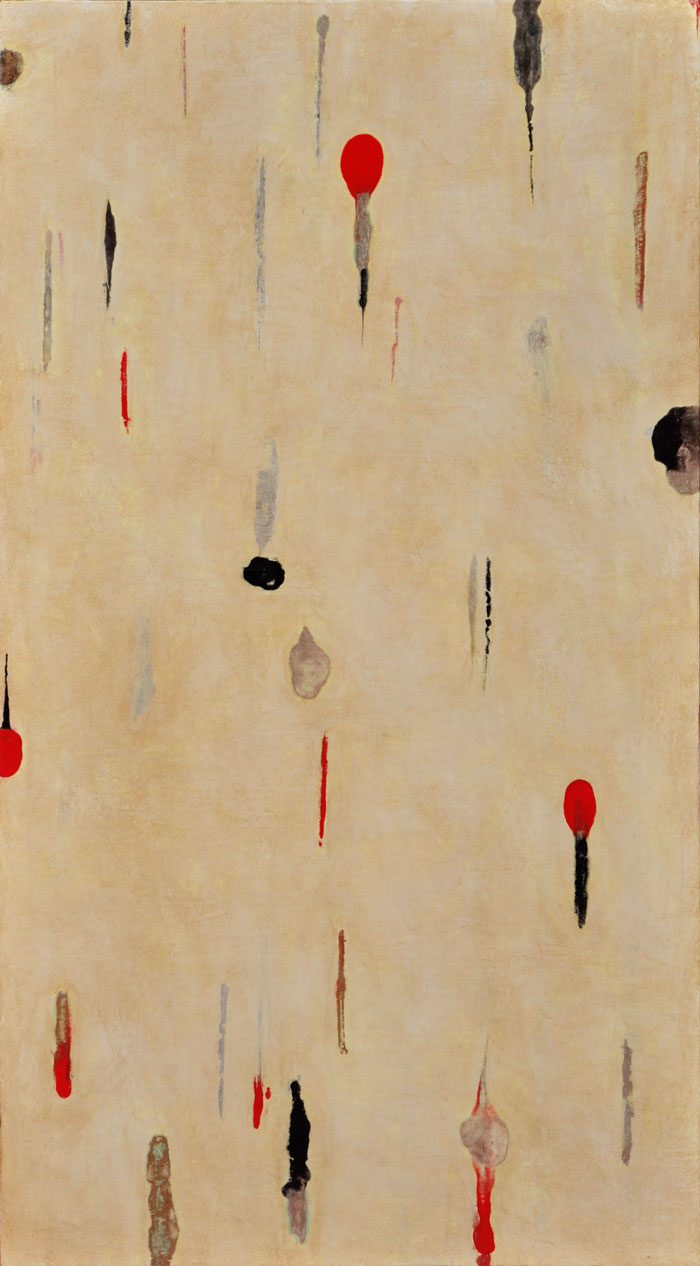
Lumenis 15, encaustic monotype and acrylic glazes on panel, 36×20
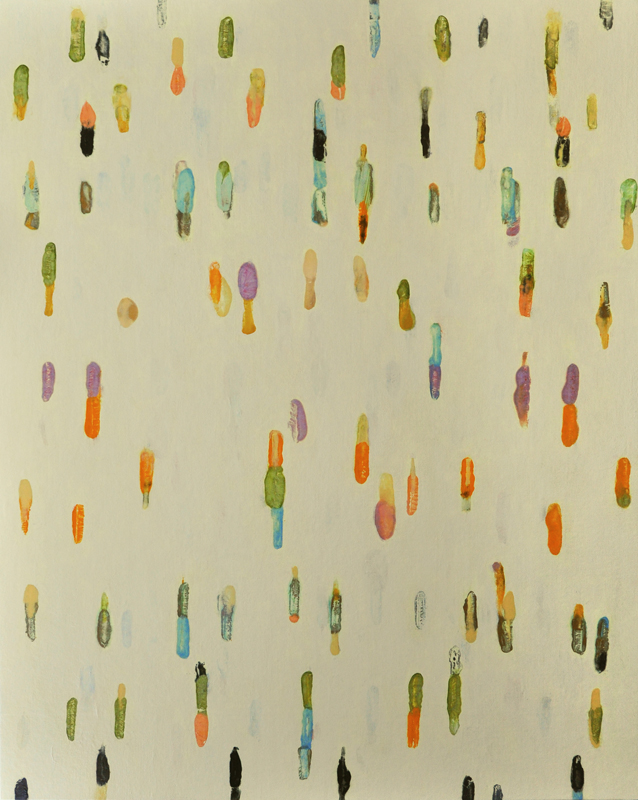
Lumenis 8, encaustic monotype and acrylic glazes on panel, 48×39
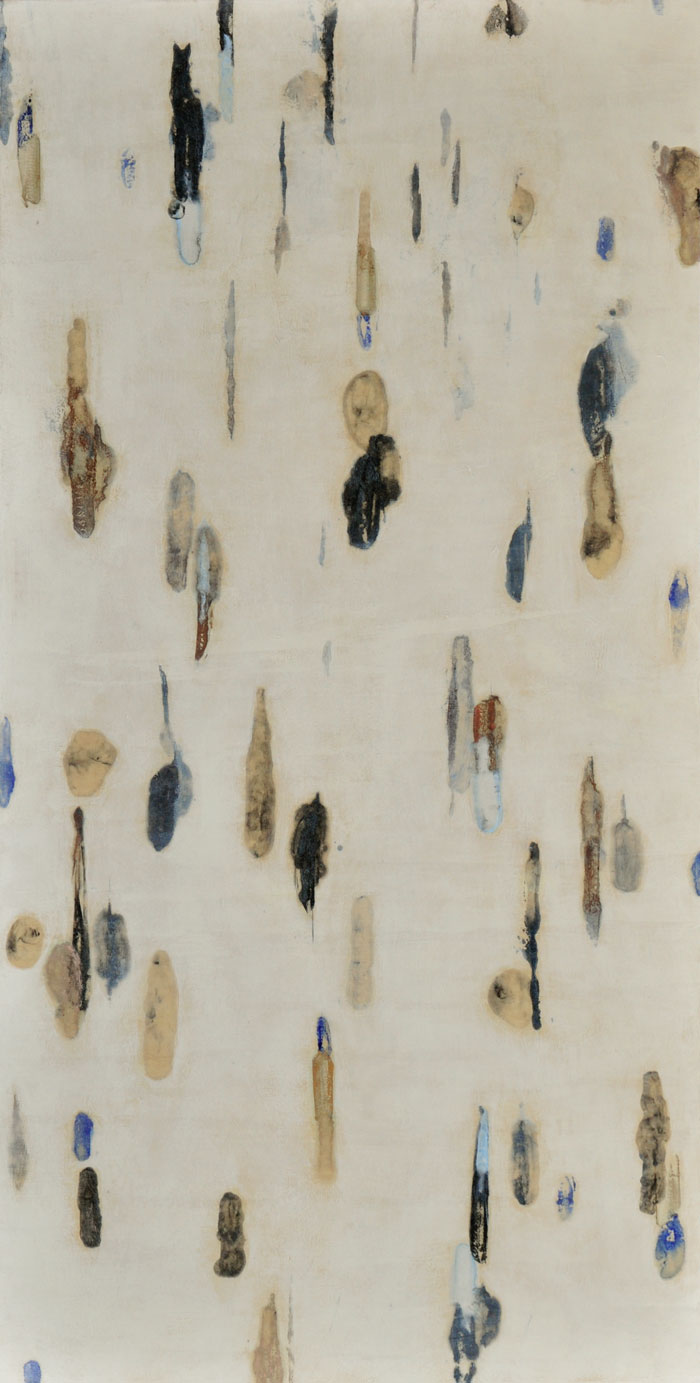
Lumenis 13, encaustic monotype and acrylic glazes on panel, 43×22
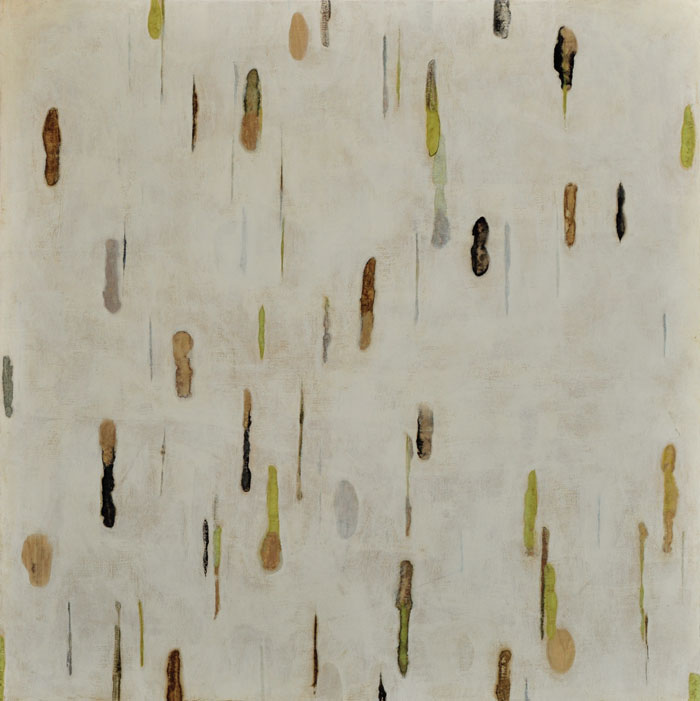
Lumenis 12, encaustic monotype on panel, 36×36
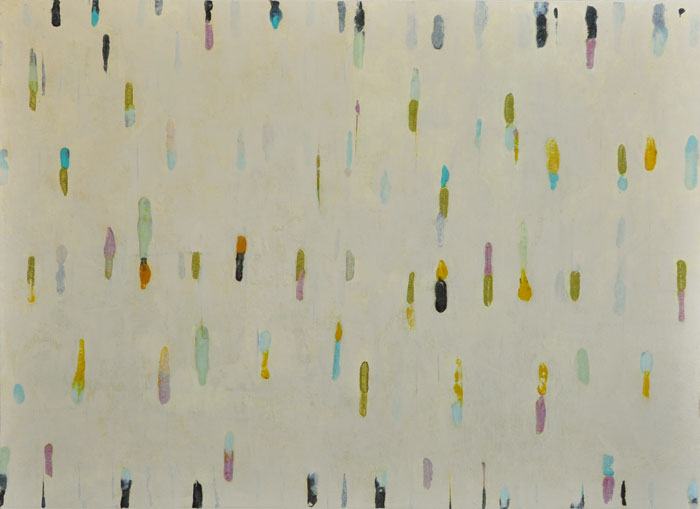
Lumenis 10, encaustic monotype and acrylic glazes on panel, 39×54
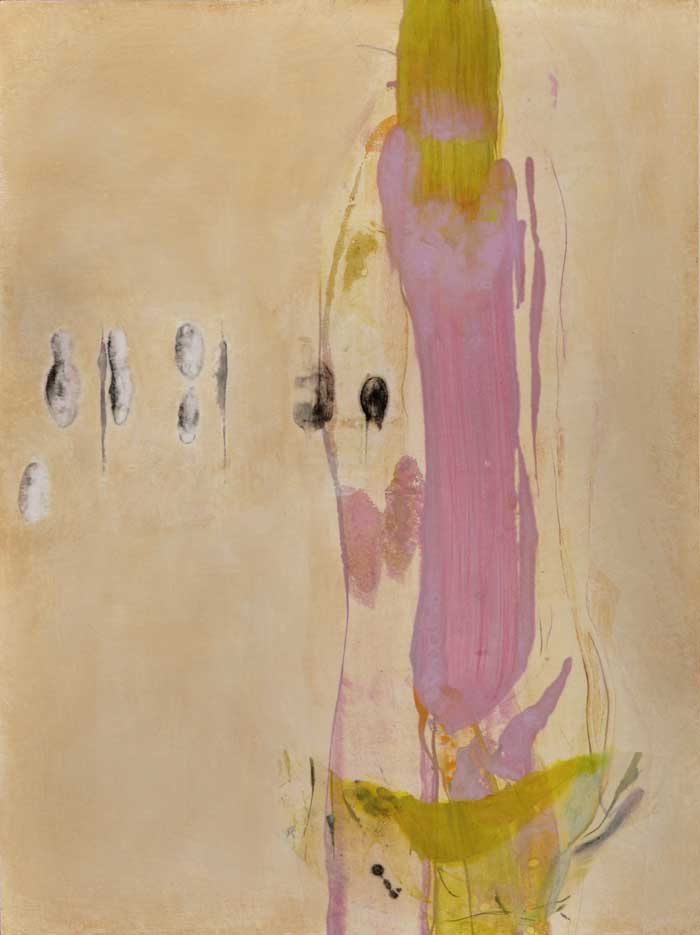
Lumenis 16, encaustic monotype and acrylic glazes on panel, 24×16
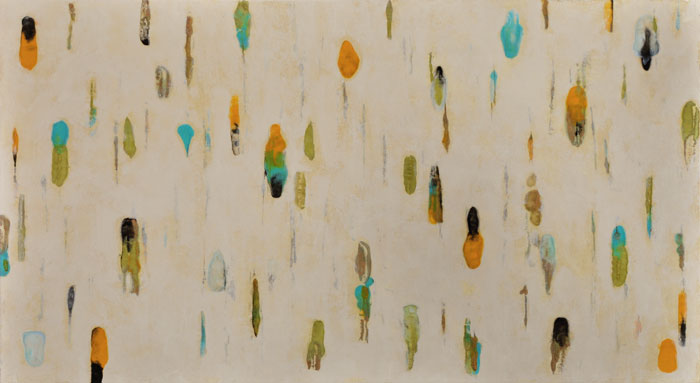
Lumenis 14, encaustic monotype and acrylic glazes on panel, 22×39
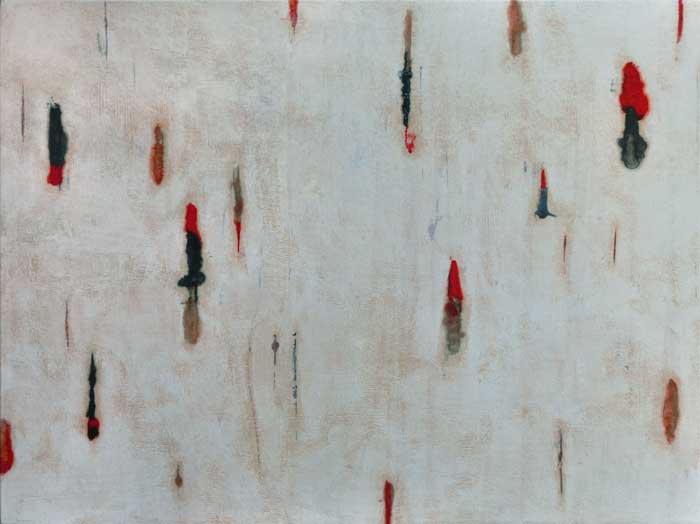
Lumenis 19, encaustic monotype and acrylic glazes on panel, 18×24
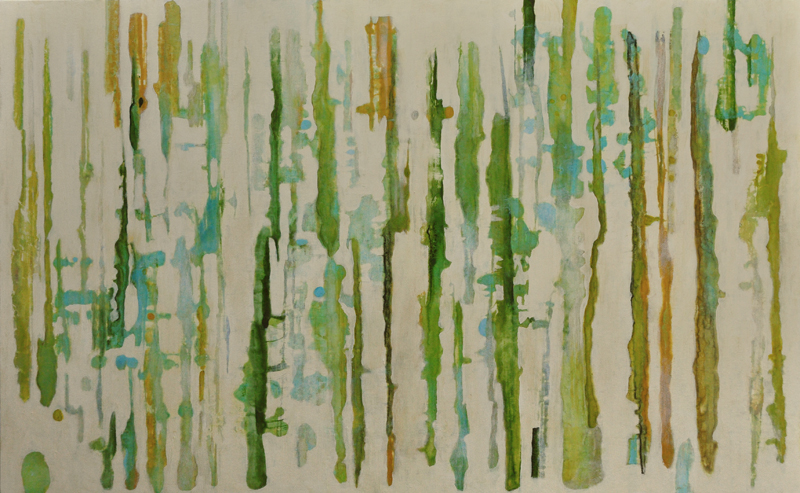 Lumenis 7, encaustic monotype and acrylic glazes on panel, 32×52
Lumenis 7, encaustic monotype and acrylic glazes on panel, 32×52
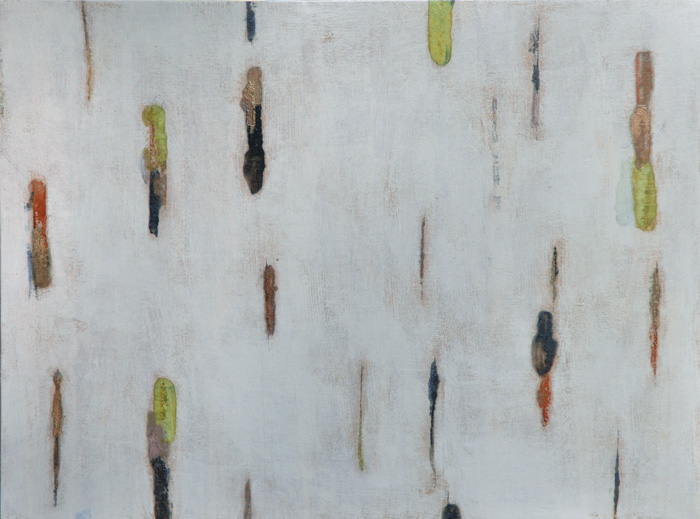
Lumenis 20, encaustic monotype and acrylic glazes on panel, 16×20
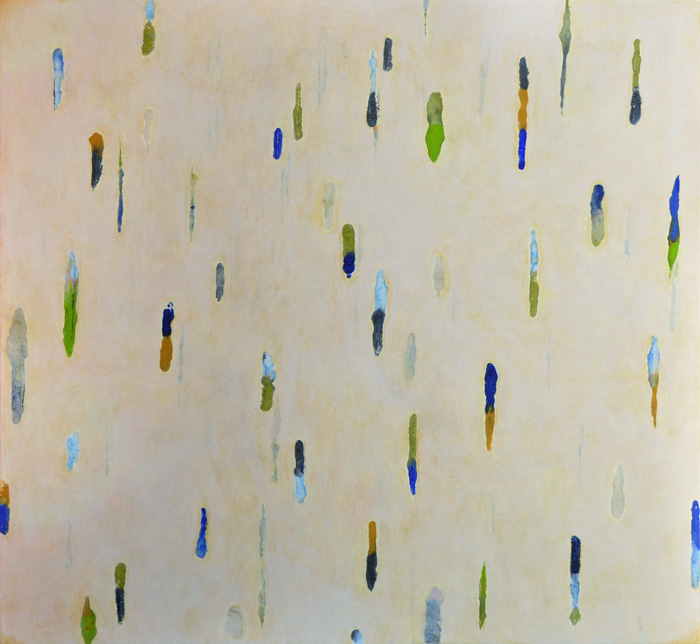
Lumenis 21, encaustic monotype and acrylic glazes on panel, 46×48
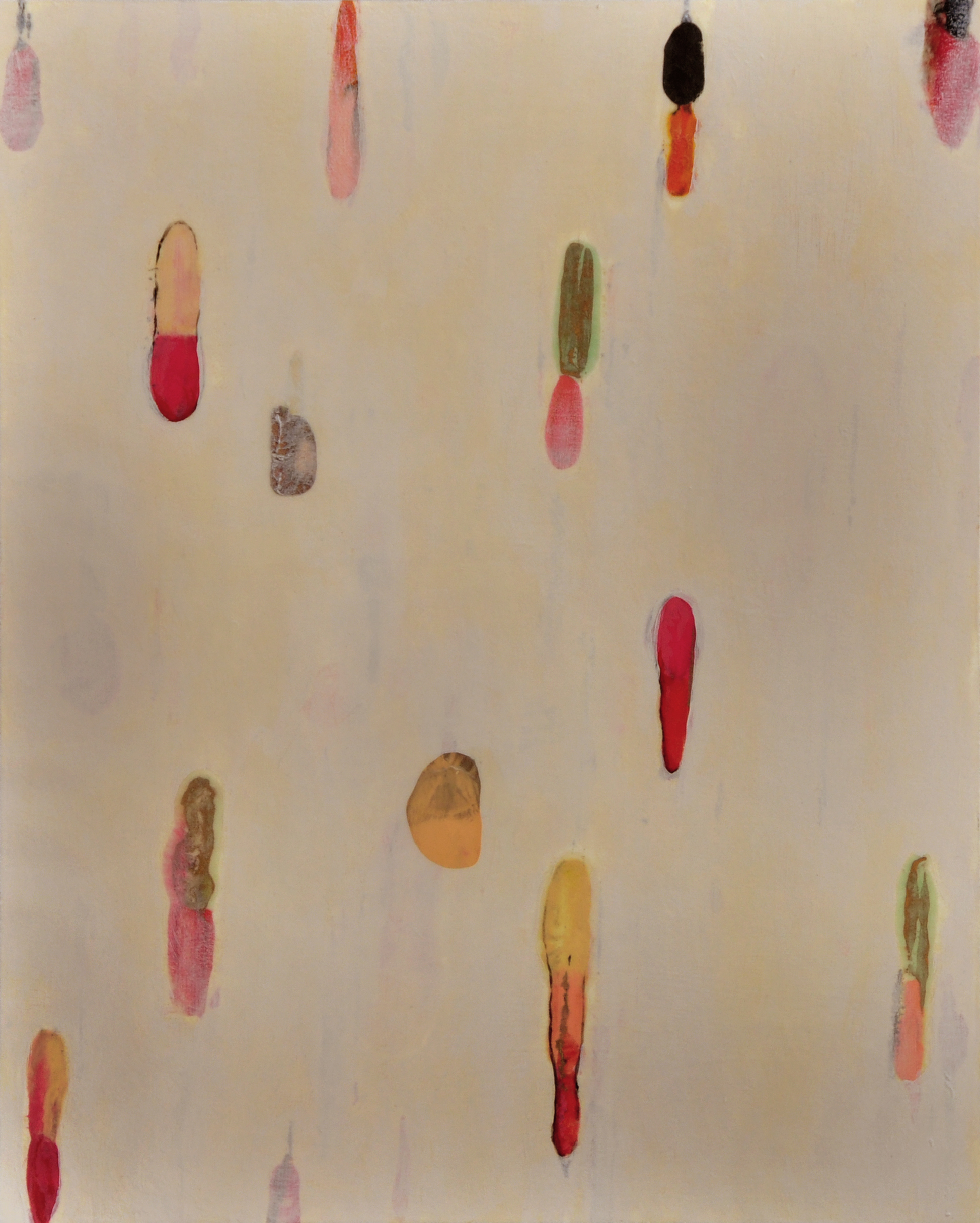 Lumenis 17, encaustic monotype and acrylic glazes on panel, 24×16
Lumenis 17, encaustic monotype and acrylic glazes on panel, 24×16
by Tracey Adams | Jan 10, 2013 | Blog
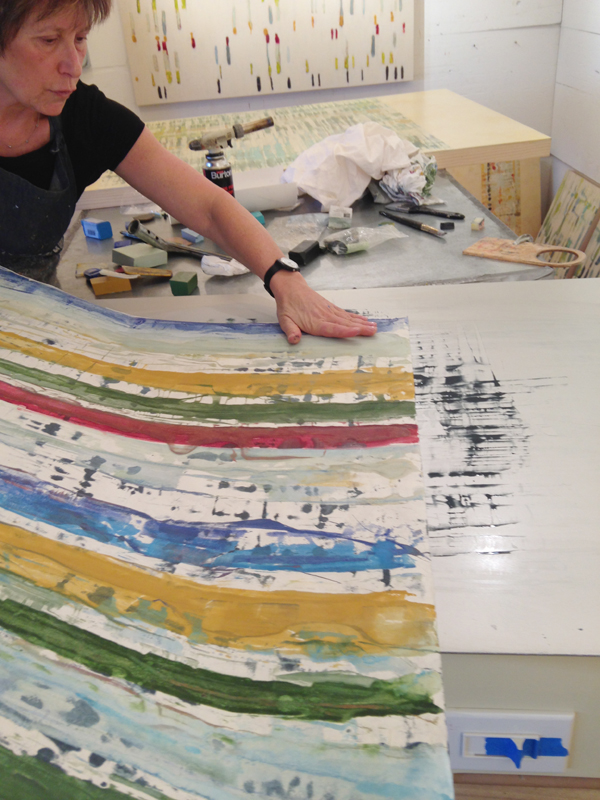
It’s been a few months since I last posted, but a busy time in the studio. I’ve been working on a new series, Lumenis, still in the early stage of evolution. This series is very connected to the place where music and art intersect and overlap. I continue to be inspired by the compositional principles of John Cage, those of “chance” music or “indeterminancy”. Decisions about mark-making involve parameters that are fixed or limited such as shape, color and spatial relationships. In addition, I have moved away from the grid as a compositional element for the first time in 30 years. All of the paintings begin with an encaustic monotype made on the Hot Box shown above, then adhered to the panel. Many layers of acrylic and oil are then applied.
The painting shown below is the last painting made using a grid. The ones that follow are, in order, the paintings as I respond to each one that went before it. While these are in the early stages of developing, I wanted to put them up for the new year.
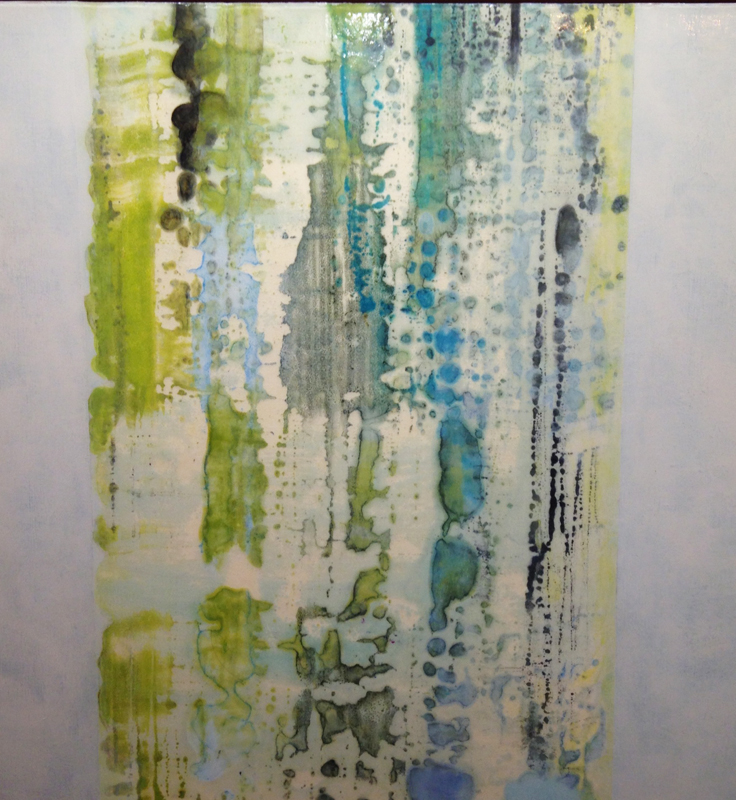
Lumenis 14, 20×20
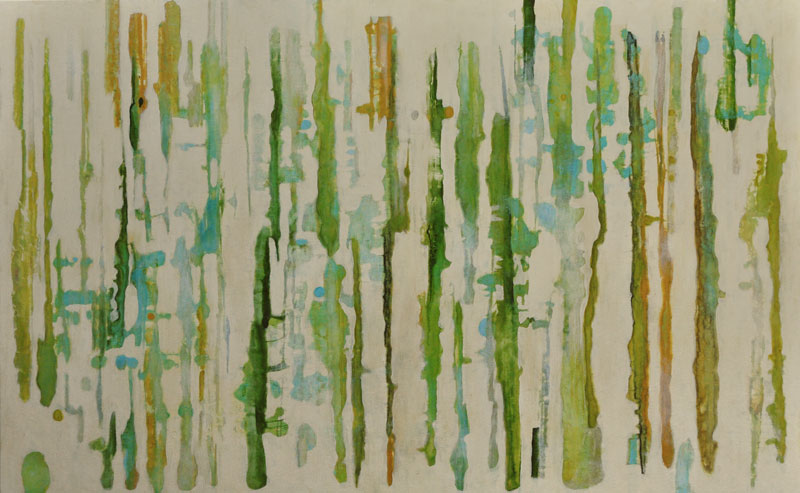
Lumenis 7, 32×52
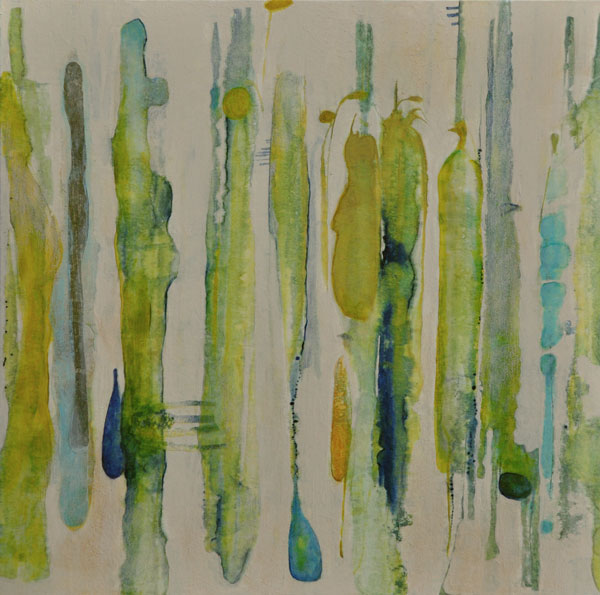
Lumenis 4, 20×20
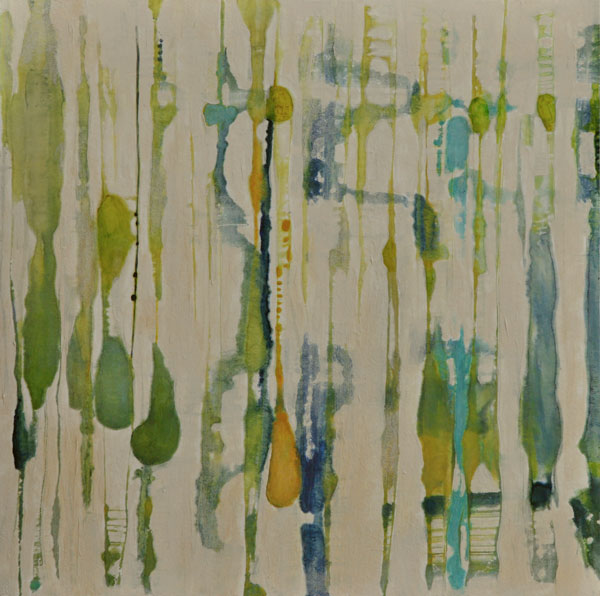
Lumenis 5, 20×20
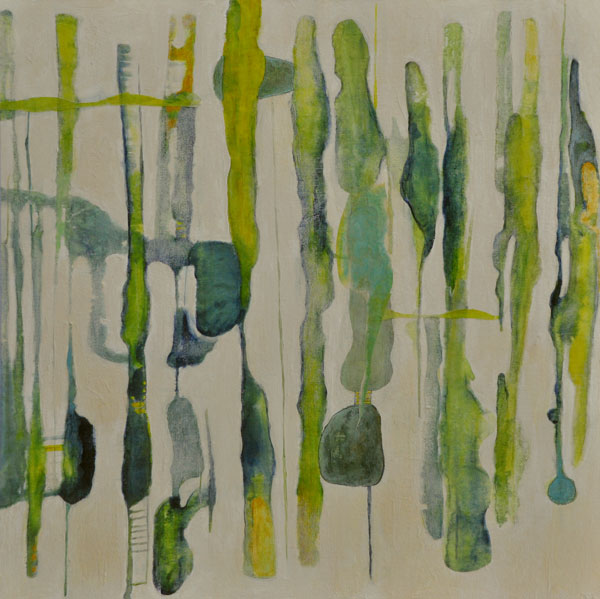
Lumenis 6, 20×20

Lumenis 9, 39×54

Lumenis 8, 48×39
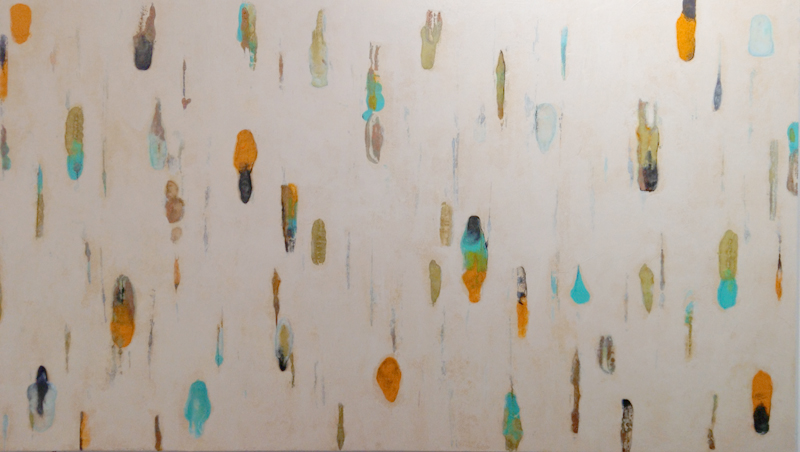
Lumenis 11, 22×39
I welcome any and all feedback!
by Tracey Adams | Oct 17, 2012 | Blog
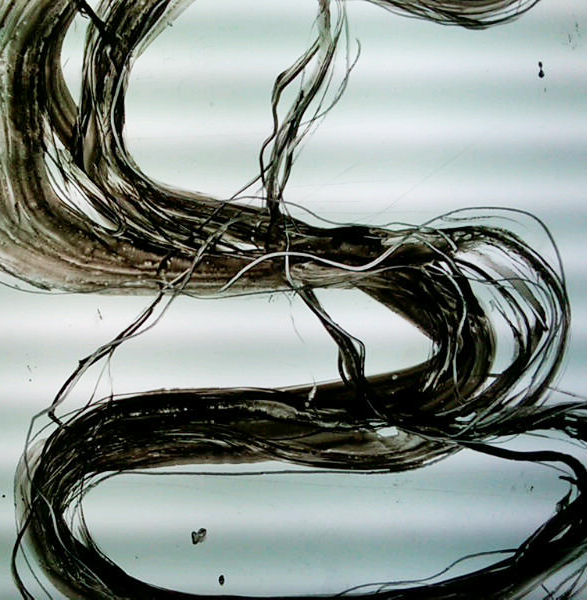
Last Sunday, I was invited to spend the day printing with Solarplates at Equinox Press in Carmel Valley. Owner and Master Printer, Evelyn Klein, guided and helped me through each stage of the process. A Solarplate is light-sensitive steel backed with a polymer material. It is a wonderful alternative to more toxic printing techniques, which I’m all too familiar with, as well as a relatively fast way to make a beautiful print. These plates can be used to make an edition of prints, collage materials or they can be mounted on panels.
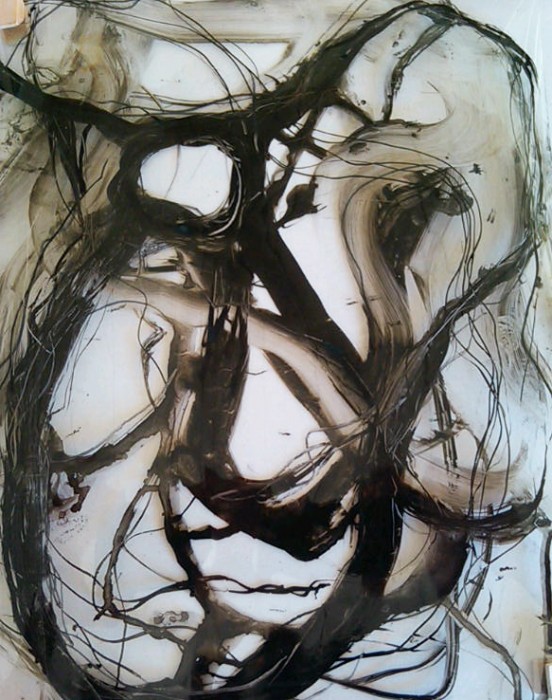
The first thing I did was to make a series of drawings with India ink and other mark-making media on clear acetate.
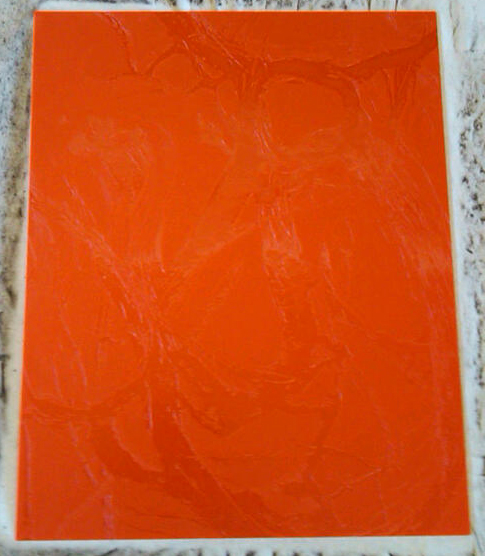
The Solarplate is exposed to a UV source (light box or direct sun) and is developed in tap water, until the gel-like emulsion dissolves the unexposed portion of the plate.

The Solarplate is inked with etching ink and is wiped using the same method one would use to wipe and intaglio plate. The plate is on the press waiting to be printed.
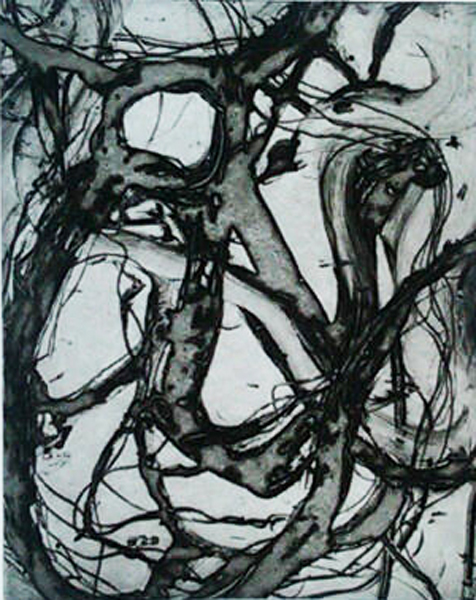
I wasn’t totally pleased with my first print as the darkest blacks appeared as gray, mid-tones. I learned we needed to expose the plate for a shorter amount of time to increase the saturation of the darkest tones.
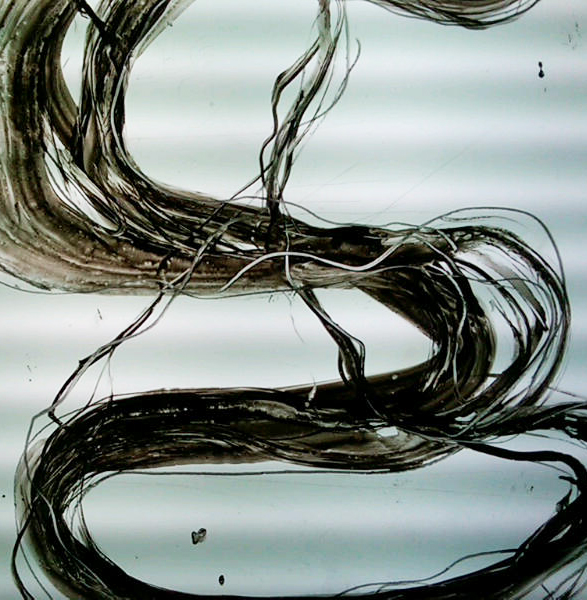
This is my second drawing on acetate before the plate was exposed to light, developed, inked and printed.
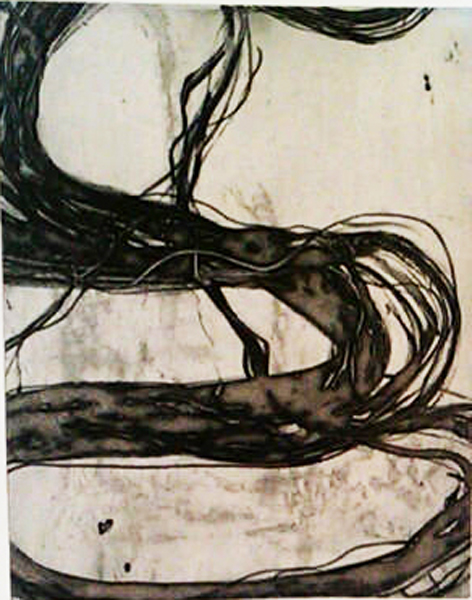
The first inking with black ink produced pleasing results!
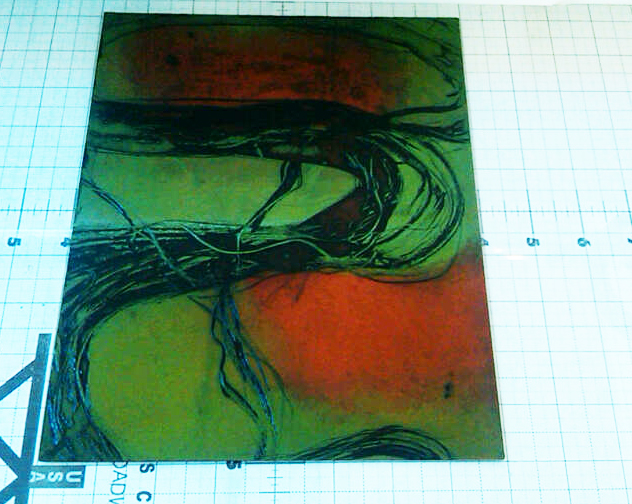
This is the plate with black ink in the incised lines and a viscosity roll of green ink (much thinner), rolled on top. The orange areas are where I wanted the white paper to show so I didn’t ink those areas.
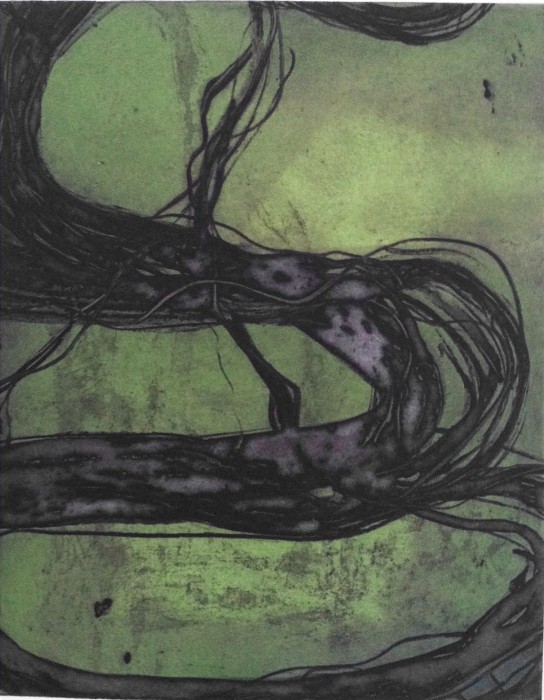
This is the final print with another viscosity roll of green ink over the entire plate this time. I decided I preferred to have the entire plate covered as I found the white areas distracting. This is an exciting way to print safely, one that produces fabulous results. I hope I have the opportunity to try this again!
by Tracey Adams | Sep 26, 2012 | Blog
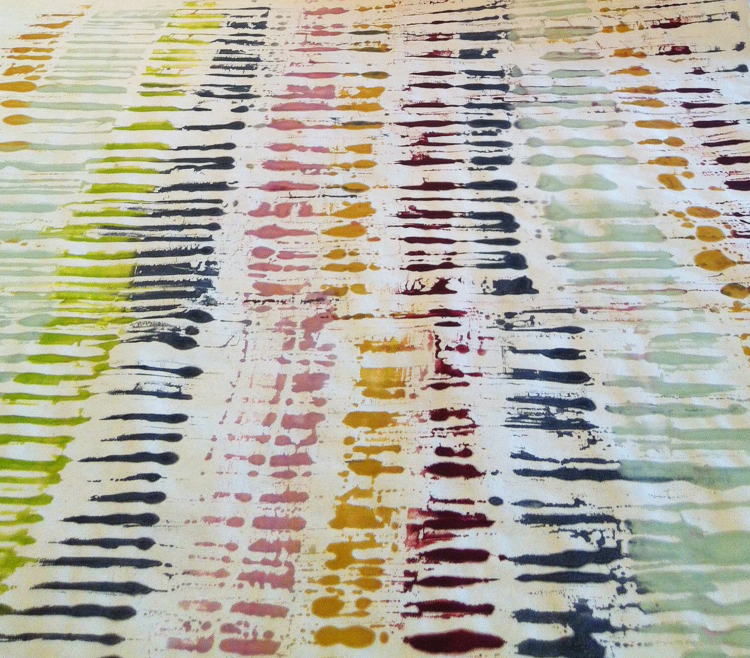
Hot off the press – what I’m working on at the moment…..
1. Music, from Gregorian chant to Philip Glass
2. The smell of oil-based etching ink and paint
3. Patterns, especially stripes
4. Time spent in Bali in 2005
5. Yoga and Patanjali’s Eight-Fold Path
6. The graphite gray fog that settles on our hill as the sun shines on the town below us
7. Teaching and learning from my students
8. Growing my own food and cooking
9. Understanding that true freedom comes from discipline
10. The love and support of family and friends
by Tracey Adams | Sep 20, 2012 | Blog
It was a warm September evening for the reception at Bryant Street Gallery in Palo Alto. Thanks to all friends and collectors who attended.
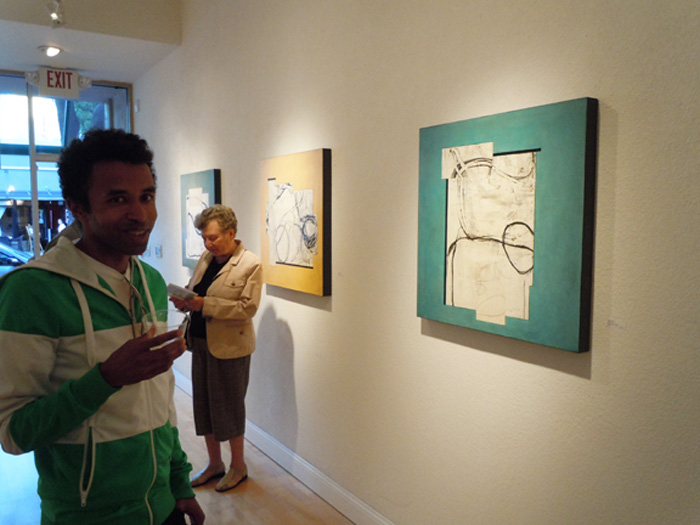
Joanne Imperial is the new collector of the largest and smallest painting in the exhibition: Radix 20, 40×60, mixed media and Collage 10, 18×13, collage on panel
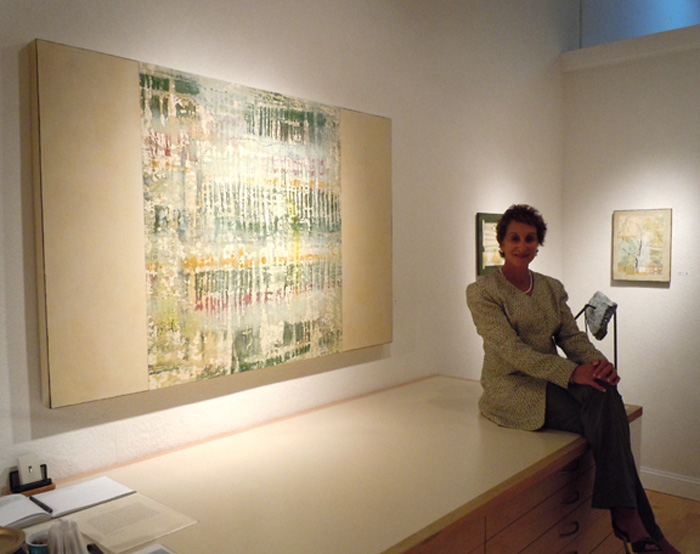
Susan Hewitt thinking about Radical 39, 45×45, mixed media
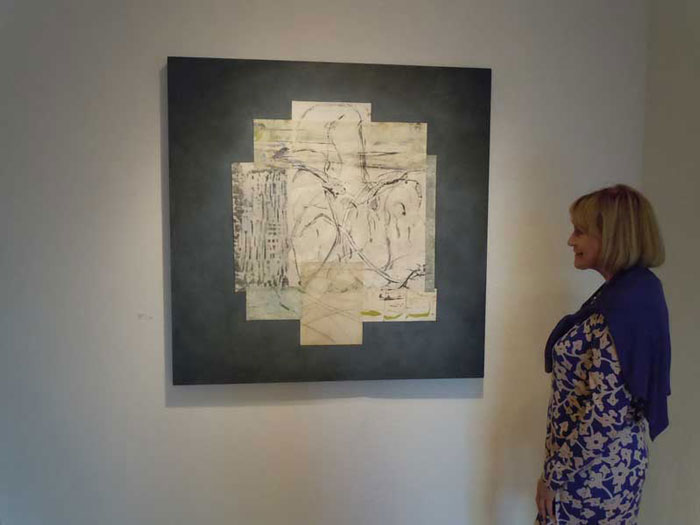
Artist Thea Shrack and her daughter, Monette
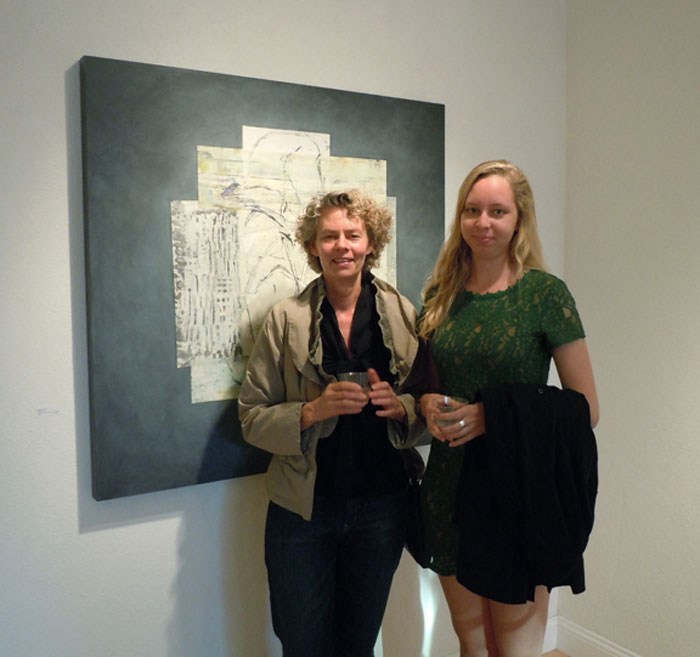
Artist Marti Somers next to Radix 21
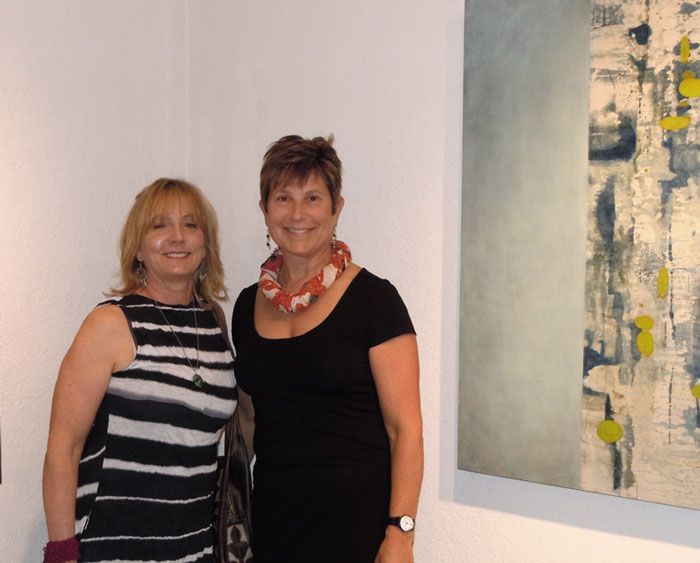
Gallery owner Karen Imperial, Tracey and collector, Joanne Imperial
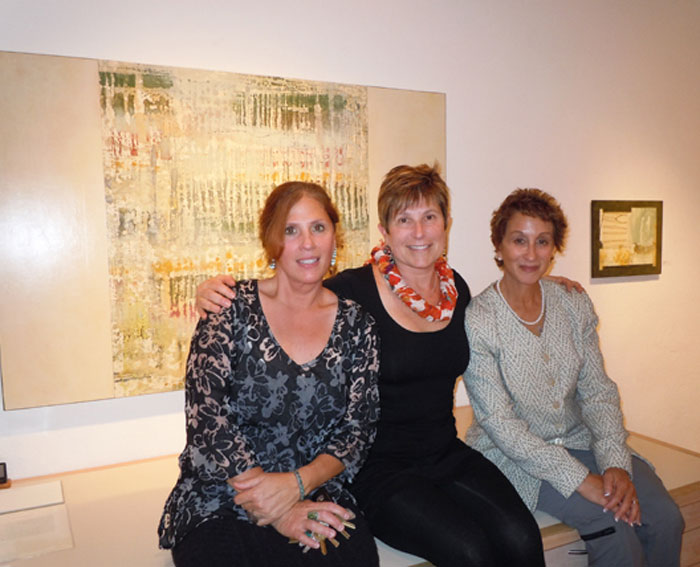
4 collages from the Fresno Art Museum exhibition: Between Gesture and Geometry, 2011
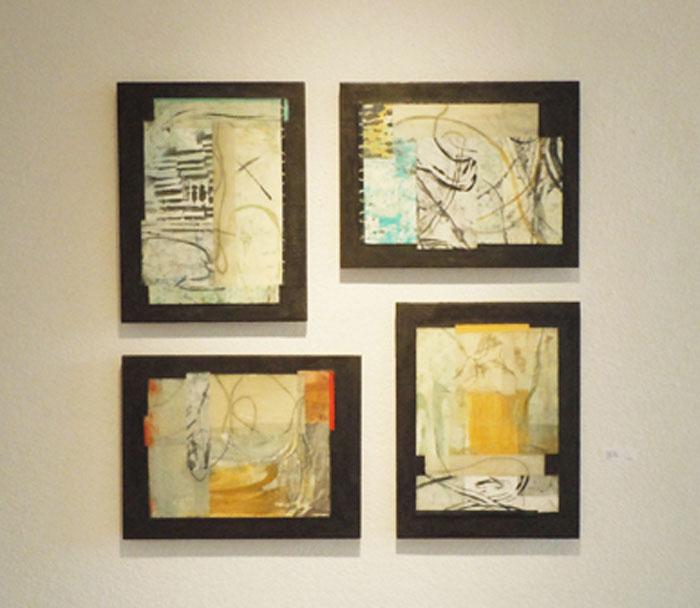
by Tracey Adams | Aug 31, 2012 | Blog
My upcoming show, Oblique Intention, opens at Bryant Street Gallery in Palo Alto on September 1. The Opening Reception will be Friday, September 7 from 6 – 8 pm.
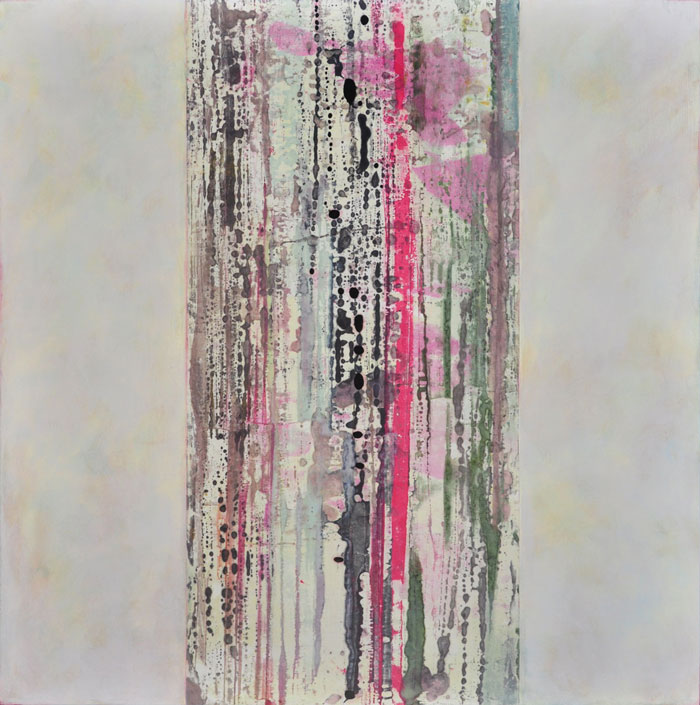
Radix 25, Mixed Media on Panel, 40×60
The paintings that will be shown in this exhibition represent a year’s departure from working exclusively in encaustic – encaustic monotype with thin layers of encaustic color in the surrounding area. For many reasons, I found it necessary to explore another media that would reflect what my work is about and the reason I paint. After all, my work has never entirely been about the encaustic surface, as beautiful as it is. I needed a change after 15 years of working with encaustic, so I started experimenting and exploring. There were many rough spots along the way, but that’s what I crave from the creation process.
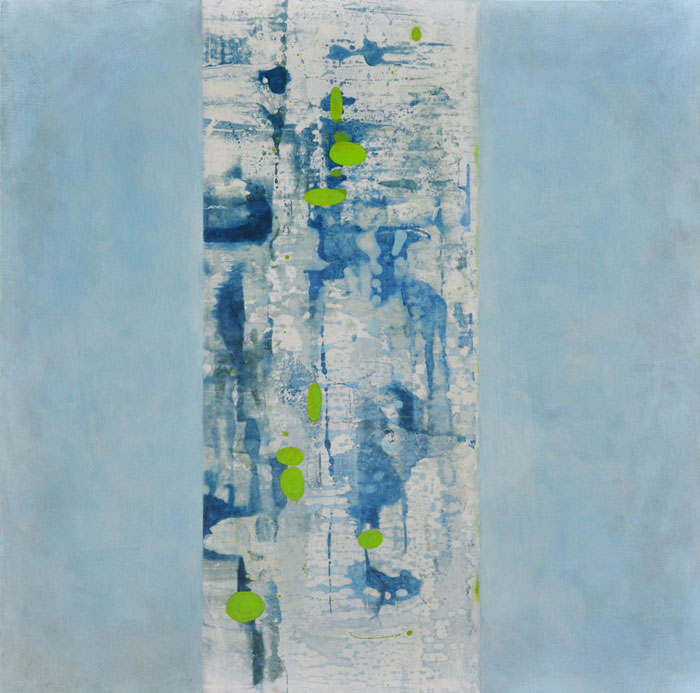
Radix 21, Mixed Media on Panel, 40×40
This new body of work is a group of paintings composed of an encaustic monotype, sometimes a single fragment mounted on panel, and sometimes multiple fragments collaged and mounted together (see last Blog). In the surrounding areas, I’ve painted many thin layers of pigmented glazes, a process I learned in the 80’s from British artist, Hugh O’Donnell. He taught me how to apply paint the way he believed Rembrandt did. I love balancing this classical approach of handling paint with the resulting abstract imagery.
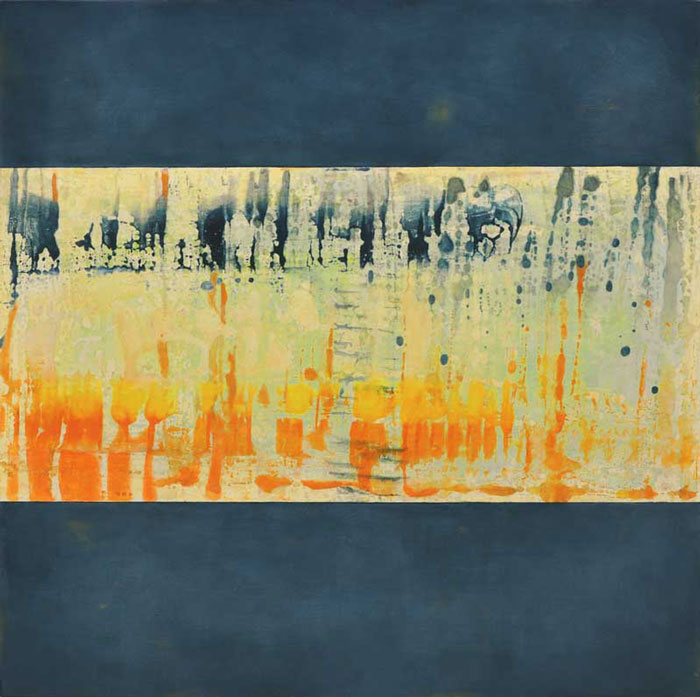
Radix 32, Mixed Media on Panel, 40×40
It takes an infinite amount of patience to, not only let each layer dry, but to see the subtle shifts of color when a new layer of glaze is applied. One can’t work quickly as in encaustic. – there’s a much slower tempo. Sometimes I sand in between applications of paint, sometimes I just add another layer. Some paintings have as many as 20-25 layers in order to create the quality of light and movement I need. There have been some nice surprises along the way such as a more highly defined surface versus the translucent and sometimes more distant surface of encaustic.
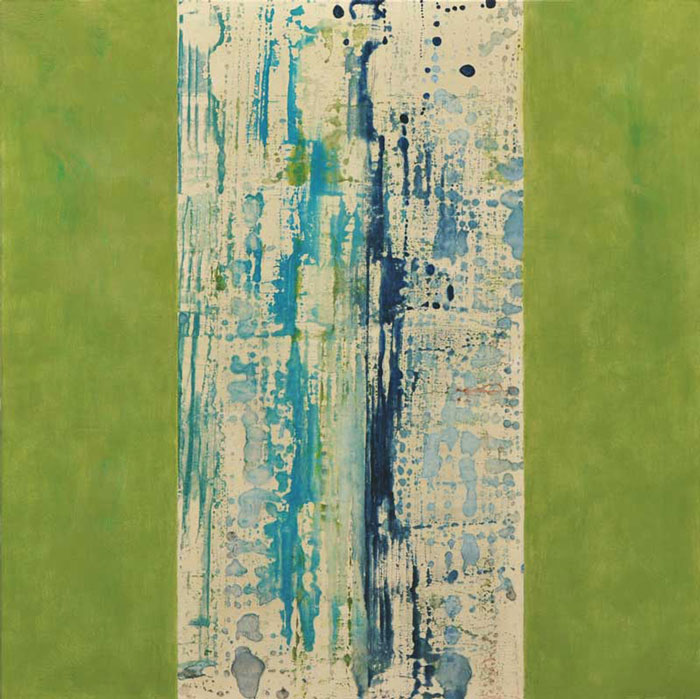
Radix 30, Mixed Media on Panel, 36×36
The title of the exhibition, Oblique Intention, comes from a combination of the meaning of oblique – not straightforward, more indirect or indirectly stated – and the word intention – a specific purpose, an aim, something to direct the mind towards. My work these days, always a reflection of my life and world, seems to move in those directions. My paintings have always had very subtle qualities that invite the willing viewer in for a closer look and opportunity to spend more time. This body of work is no exception. The contrast between the active and often colorful gestural work in the monotypes and the quiet color fields is a balance I strive for. A counterpoint also exists between the underlying grid/geometric format of the composition and the organic linear movement.
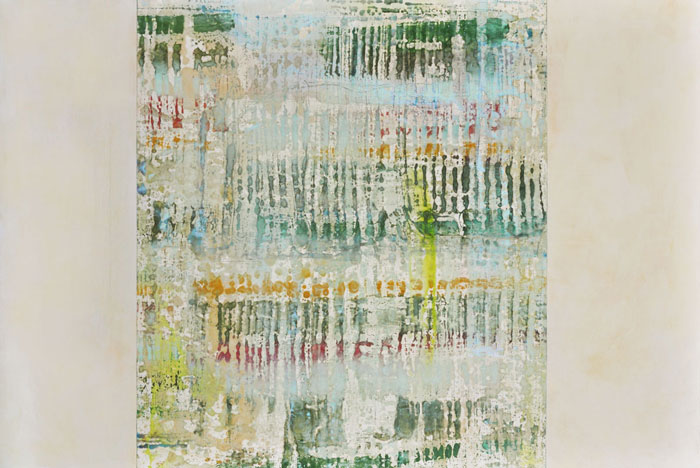
Radix 20, Mixed Media on Panel, 40×60
by Tracey Adams | Aug 21, 2012 | Blog
I often ask myself why I enjoy collage. What is it about assembling and reconfiguring different bits of paper – in my case drawings, etchings, and monotypes – that is so satisfying? Creating a visual perspective by connecting seemingly disparate fragments so that, hopefully, they work together successfully is like locating the missing piece in a jigsaw puzzle. It’s a pleasing moment for sure.
Some of my earlier collages were attempts to deal with my frustration with painting. Collage represented something I could do that was intimate, not involving large amounts of time or expense.
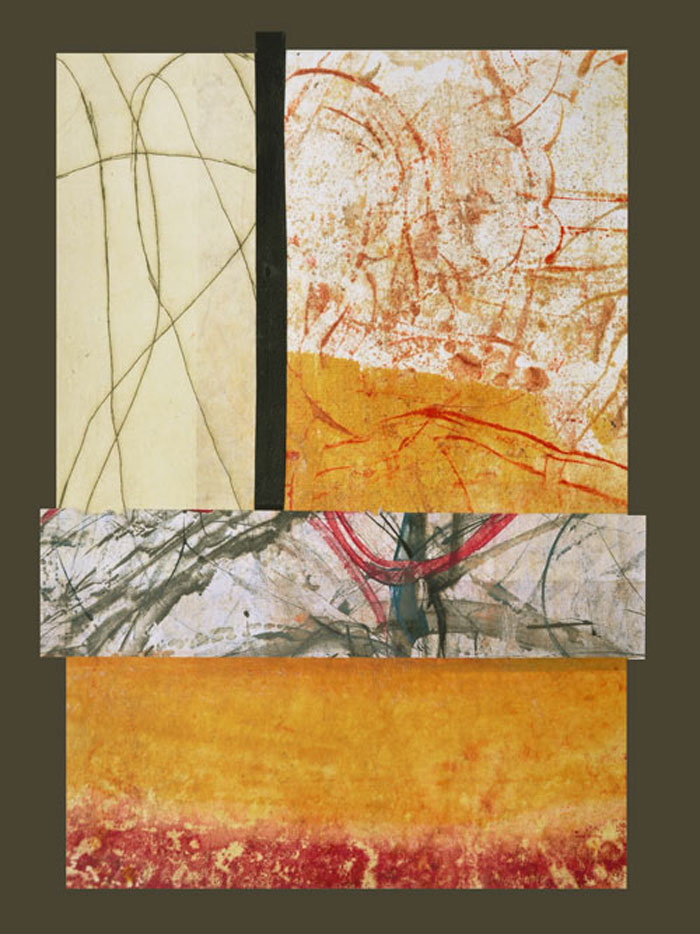
Collage 23, 17×13
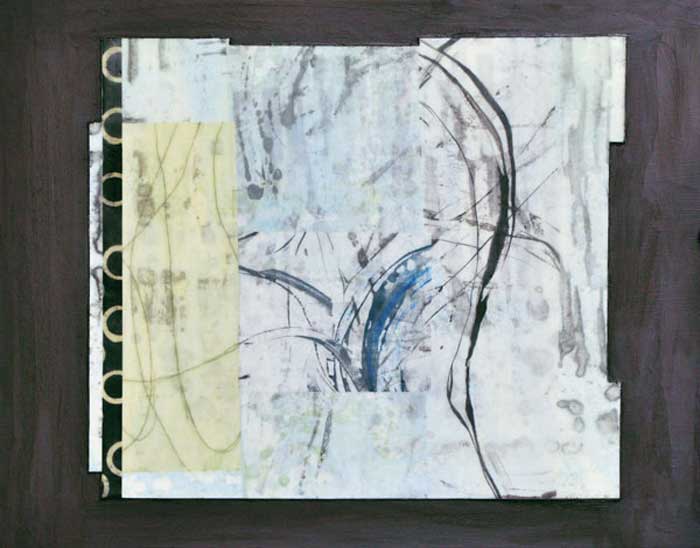
Collage 24, 13×17
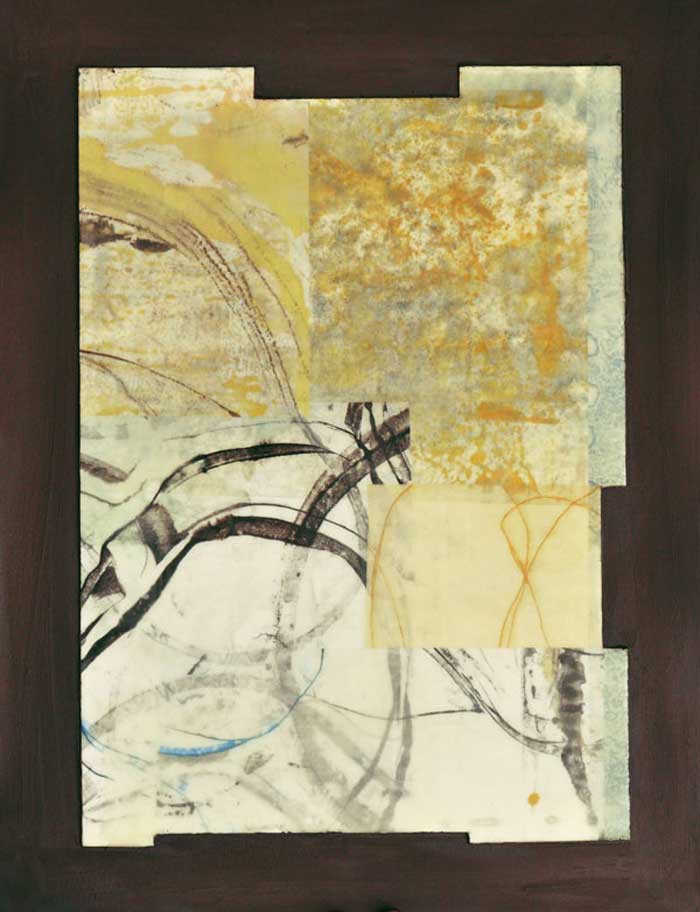
Collage 27, 17×13
They were fast and fun, using fragments of materials on hand. I made a promise to myself not to go back and rework them, just to keep making more, otherwise I wouldn’t see where this process was going to take me. After looking at over 30 of these, spread out on my studio floor, I decided to mount one on a panel, painting a color field in the surrounding area, a process I had been doing for a long while . I liked where it was going and continued to work on larger collages.
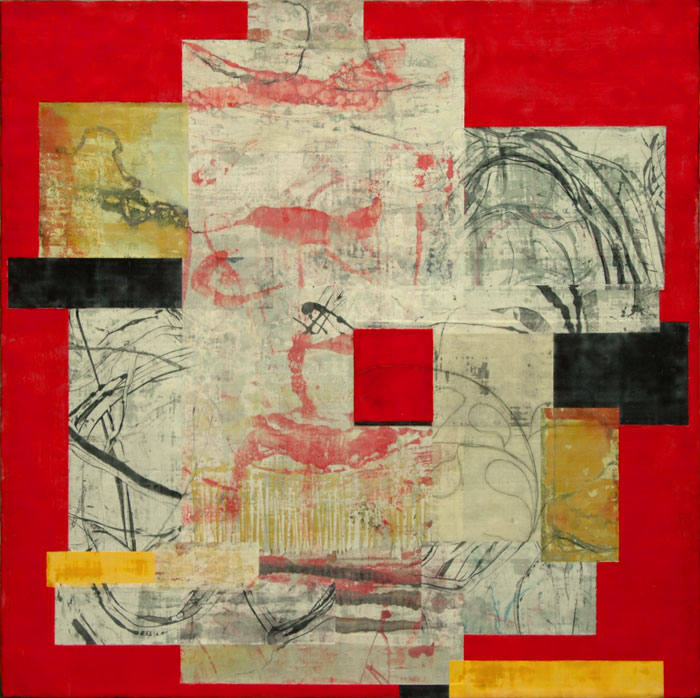
Radicle 6, Encaustic, 40×40
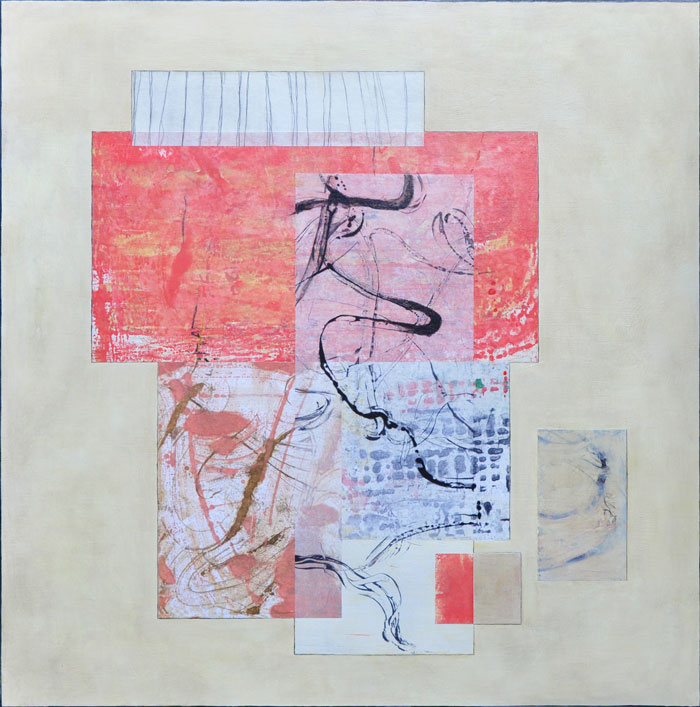
Radix 10, Mixed Media on Panel, 40×40
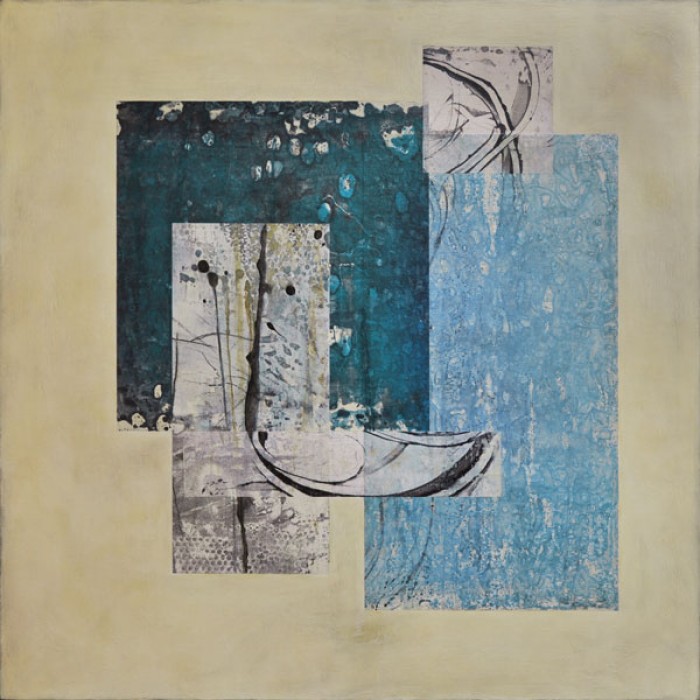
Radix 13, Mixed Media on Panel, 40×40

Radicle 9, Encaustic, 40×30
My eye would follow, as a musician might read a line of music: a new order and perspective was created by the juxtaposition of lines and shapes.
Sometimes I found myself focusing entirely on these intersecting black lines, as they weaved in and out of focus, sections of them covered by other lines that had been added through this collage process. Now it was getting fun.
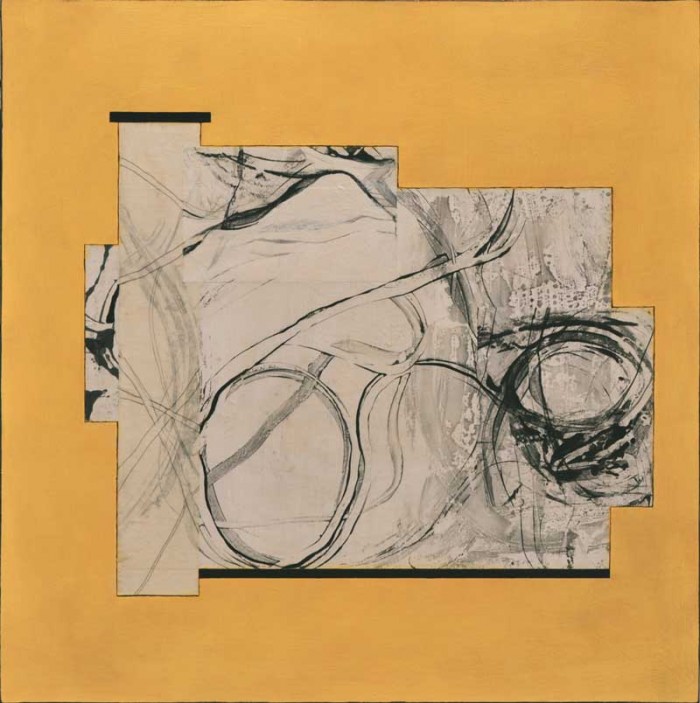
Radix 17, Mixed Media on Panel, 30×30
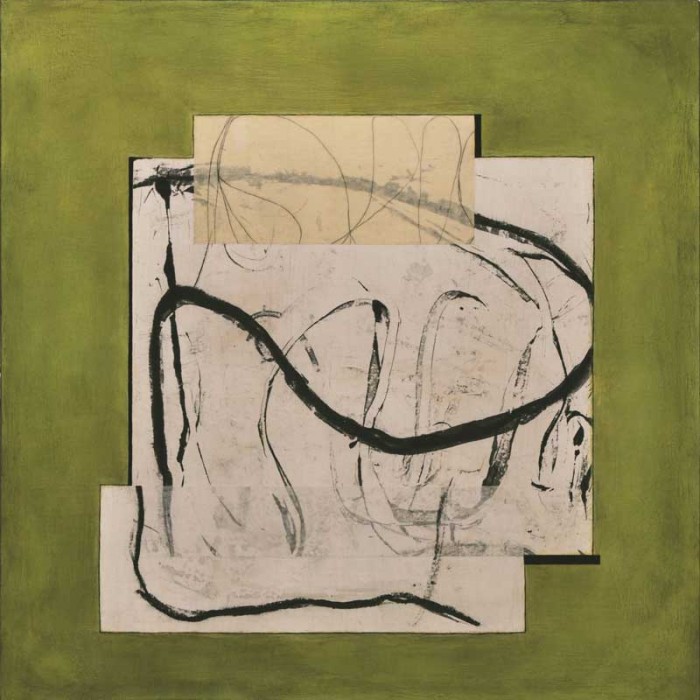
Radix 18, Mixed Media on Panel, 30×30
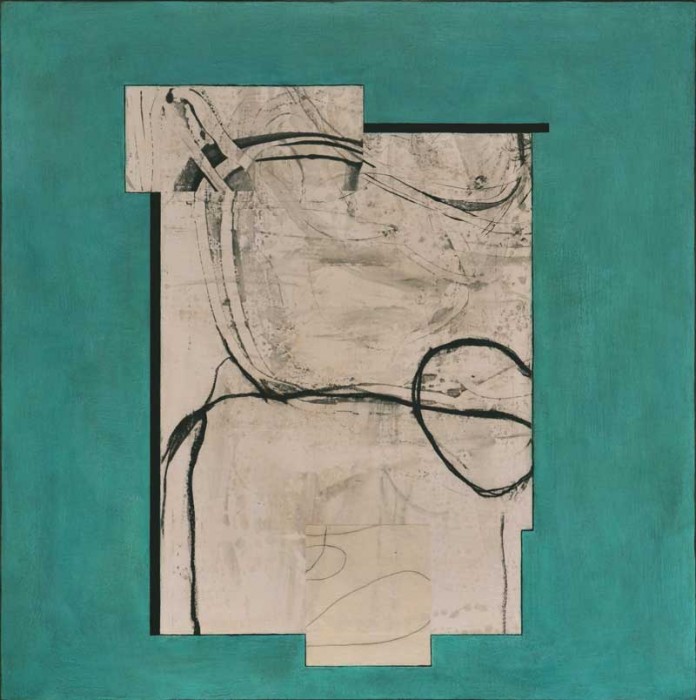
Radix 19, Mixed Media on Panel, 30×30
Dimensional planes were being created that hadn’t appeared before, a subtle sense of depth and space, inviting the viewer to look more closely.
There are days I work on a sole fragment (my next Blog), enjoying the simplicity of one, rather than many. I feel very fortunate to be able to go back and forth working between the 2 processes with equal enjoyment and ease. Each time I return to working with multiple fragments or working with a single piece, I’m influenced by what I’ve been doing with the other and look forward to seeing where the process then takes me.
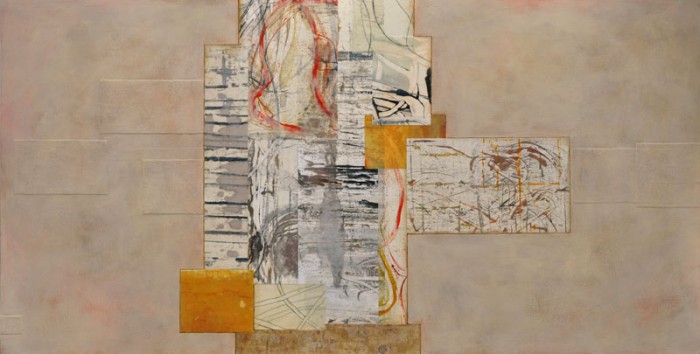
Radix 1a, Mixed Media on Panel, 30″x60″
Here’s a link to a Blog about collage which includes my work: sfcollagecollective.wordpress.com
by Tracey Adams | Aug 14, 2012 | Blog
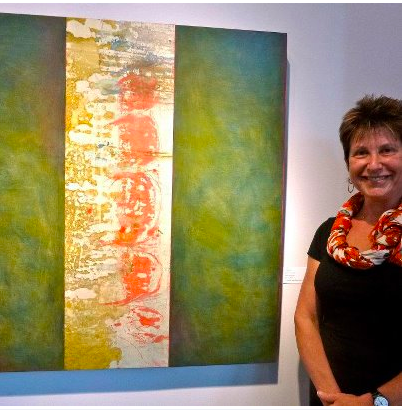
Art Access Magazine, July 5, 2012
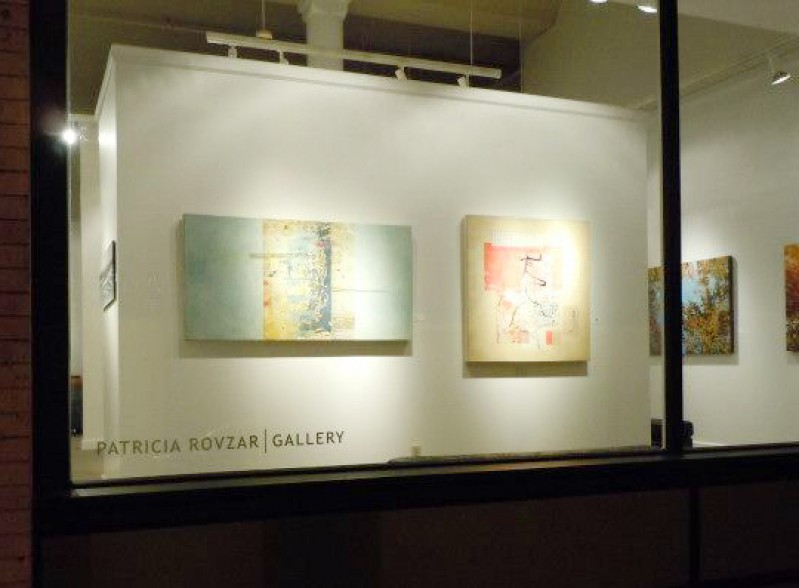
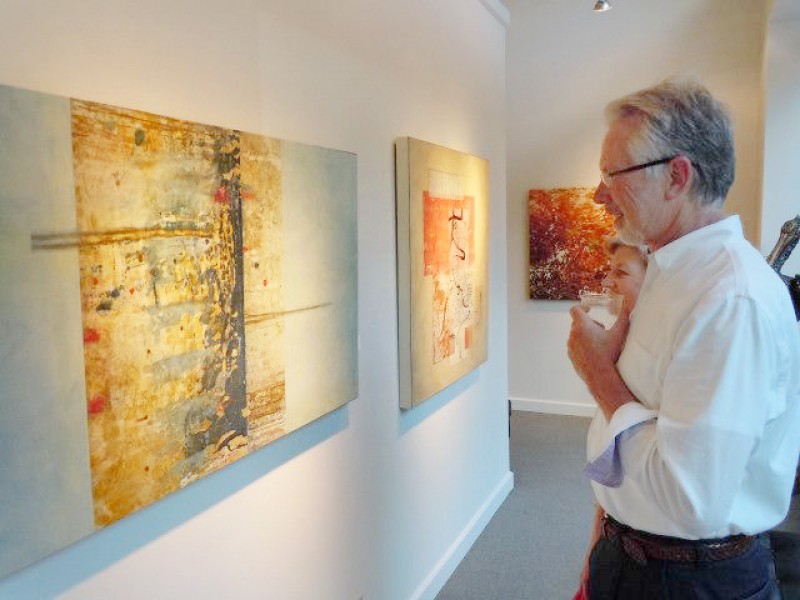
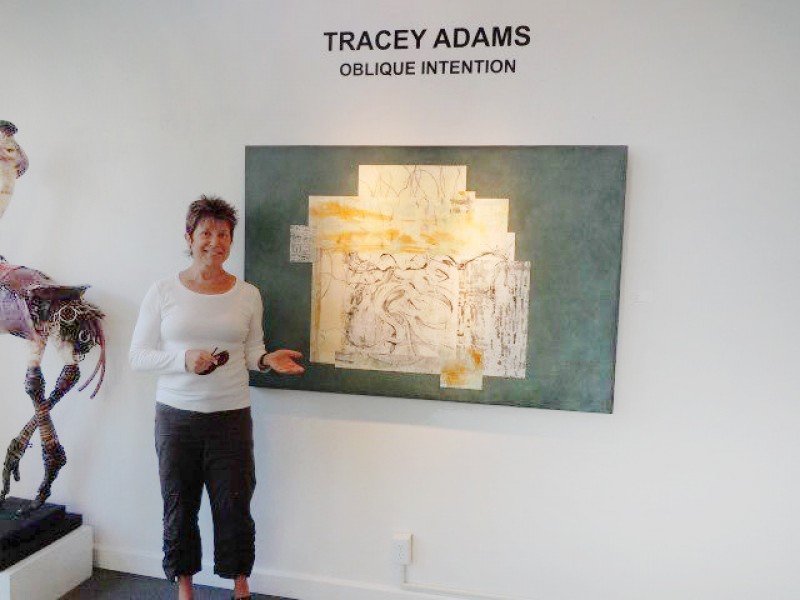
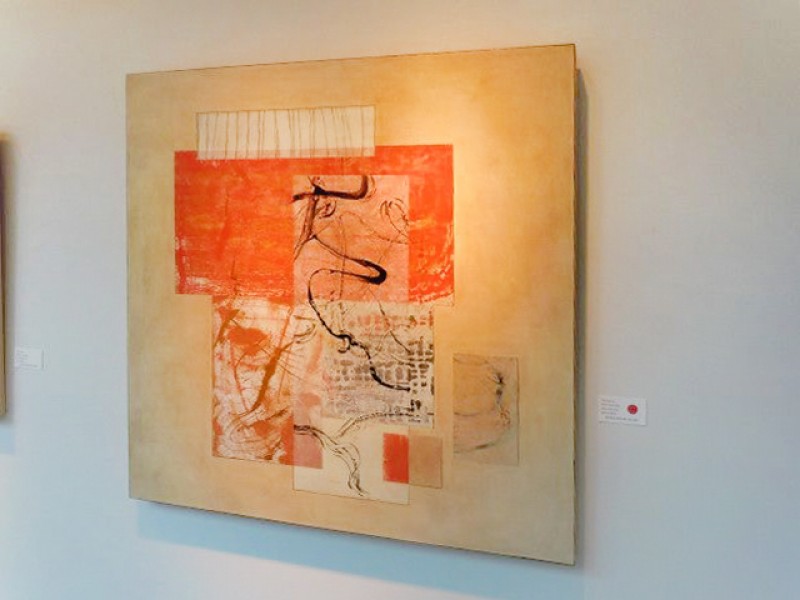
by Tracey Adams | Aug 8, 2012 | Blog
I’ve been working on a particular painting for 10 months, loving some aspects of it, not loving the rest. Basically, it was not working for me and I was too attached to let it go. It seemed no matter how many layers of glaze I added, I couldn’t get it right. The issue involved the size of this particular panel and the composition. In the back of my mind, I knew what needed to be done, but didn’t want to do it. How could I cover up months of hard work developing such a beautiful surface? My decision was to turn it towards the wall where I didn’t have to be reminded of this on a daily basis.
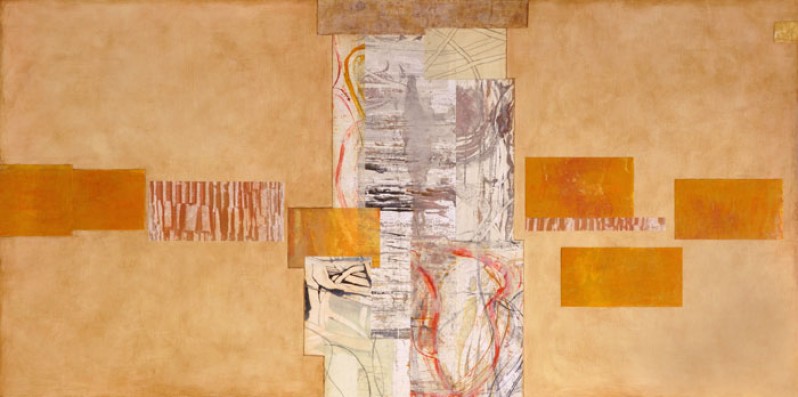
Last Friday, I decided to add a couple of collage fragments, upset the compositional balance and paint over much of the painting’s surface. It was liberating to say the least. I could actually see where it needed to go. It was like holding up a mirror and looking at myself. I include a photo of the just-painted-over surface and will update as the old painting undergoes transformation.
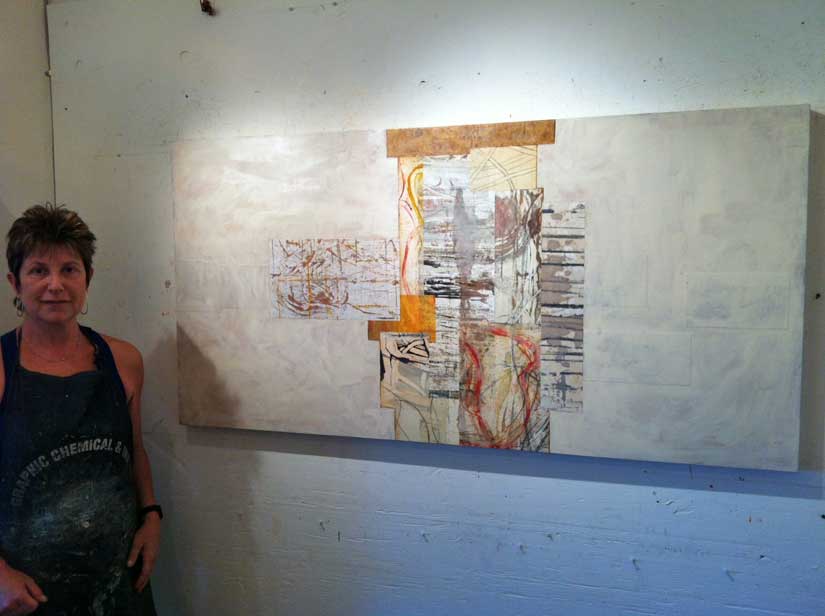
Even though I’ve been painting for over 30 years, some paintings catch you by surprise, totally perplex you and, hopefully, become your greatest teachers. It took me almost a year, and this is the completed painting…
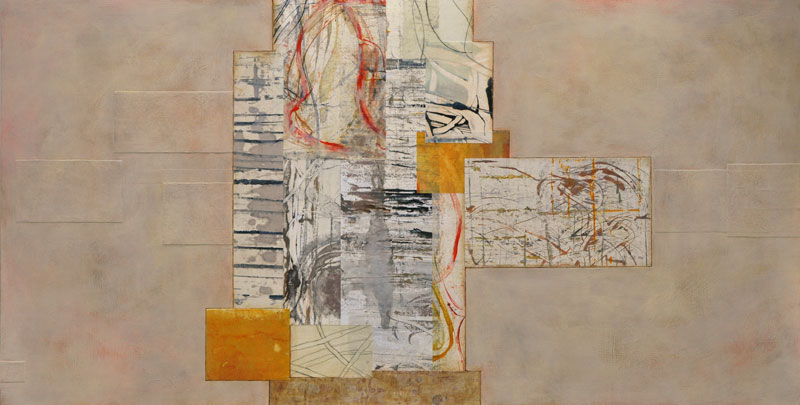
by Tracey Adams | Jun 16, 2012 | Blog
In writing my first Blog ever, I want to acknowledge how fortunate I am to have found my way into this amazing thing called art. I remember my first day as a graduate student at the New England Conservatory of Music in Boston. It was September of 1978 and I had been painting during the sweltering summer in my third floor studio apartment. All I wanted to do was continue painting and yet, I had recently committed to spending 2 years studying Conducting in school. This was a difficult decision especially considering I had a scholarship which would cover many of my expenses as a music student.
Jumping ahead to when I finished my music degree 2 years later, having taken as many art classes simultaneously as possible, I decided to move home to the west coast, I found whatever space I could to draw and paint. The kitchen became my new studio, putting everything away at night and converting it back to a place to cook and eat. I craved my very own studio, somewhere I could go to delight in this wonderful process of art making. I spent all my waking hours thinking about art, trying to find a way to make a new studio materialize.
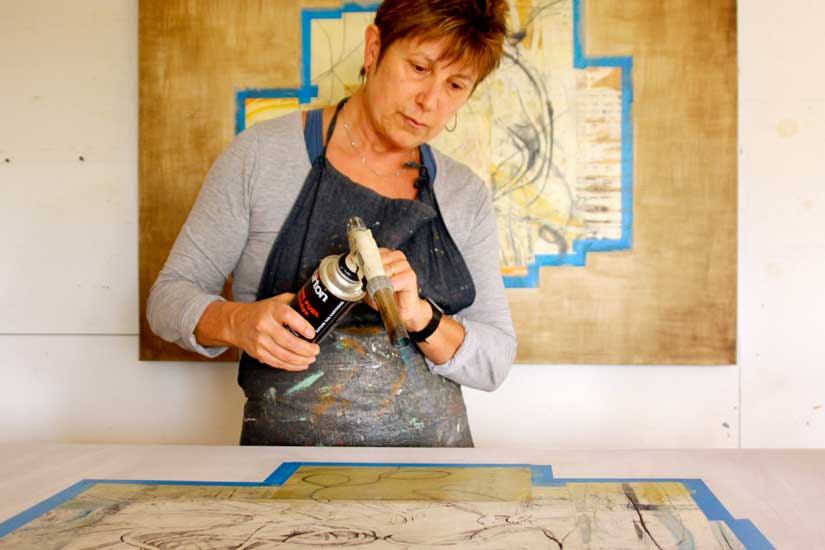
Skipping ahead to 1992, my husband and I moved to Carmel, one of the most amazing places on earth, where we were surrounded by trees and exquisite beauty. I finally had my own place to paint. So much has happened in the 20 years since the summer we moved here: incredible exhibition opportunities, inspiration and growth and lots of hard focused work. It is fun to watch the evolution of my process especially since I work in series, many of which are shown under Art. While much has improved and evolved in the way I paint, the concept behind my art making has remained the same.
It seems fitting that I am celebrating 20 years of living in Carmel with the launch of my new website and Blog. There are so many people to thank and so much to be grateful for. Check in occasionally for some thoughts and ideas about the art process. Here’s to another 30 years of creativity!

































































